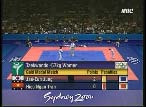
30/9/00
Not a lot happening today, site updates been delayed, Ihug died just before the site was uploaded
Lyngsat site looks to have had a Colour touchup as well as moveing to a new server
From my email and ICQ
Another Telkom 1 Report
Hi Craig,
I receive very strong signals from Telkom 1 here in Port Vila, vertical , ADL CP400 (although I`m using a 3.7 metre dish)
CNBC with no breakup on the Satcruiser, which by the way is a fantastic receiver.
Regards,
Andrew Harrison
More from NBCi Re: password chatroom problems
Hello Craig,
Thank you for your message.
Now that we have a merged NBCi database, there may be a member at NBCi
with a conflict to that name. If dashal adds a dashal456 (or something
different than numbers to make that name unique) they should be able to
log on fine.
Visitors to your chat room may also password-protect their favorite user
name, or "handle", by joining NBCi. In that fashion, your chat room
visitors would secure entry to your NBCi FreeChat every time they visit
by inputting their own NBCi member name and password.
Please reply to this e-mail if you need any further assistance.
Thanks,
Simon
Support Team
NBC Internet
Craig these are for Soccer fans in region !!
Palapa C2
RCTI will begin the Seri A - Italian League - live coverage every Sunday and Monday.
Sunday Oct 1,
1:30 am - Jakarta Time - Napoli vs. Juventus
8:00 pm - Roma vs. Bologna
Monday Oct 2,
2:00 am - Atlanta vs. Lazio
Also note on RCTI, they will transmitting live the Europe Champion League - the next matches are on Oct 17.
SCTV will cover the English Premiere League - live coverage every Saturday and Sunday.
Saturday Sept. 30,
9:00 pm - Jakarta Time - Leeds United vs. Tottenham Hotspur
Sunday Oct. 1,
10:00 pm - Arsenal vs. Manchester United.
I will send this news on Friday night Jakarta Time after i'm sure what matches that will be transmitted live.
Regards,
Adi
Dear Craig,
Thanks for your mail.
CBTV is a new DTH satellite tv system running by China Government this
year. It uses 110.5 degree SINOSAT 1 to tranfer programs in KU-band. It
contains 38 Chinese channels and scrambled by IRDETO.
By the way, I would like to get a link to your site, can I get your
authorization ?
Best Regards,
Benny Chan
( I have checked out Sinosat 1 coverage it dosn't make it to Australia but what if this service was to take over from the Asiasat 2 FTA Chinese channels, hmm could we see the Chinese Regionals move off of Asiasat 2??)
From the Dish
Thaicom 3 78.5E "102.5 Hit Channel promo" has left 3551 H
29/9/00
Still not a lot happening with the Olympics winding down there may be testing in preperation for the Olympics Closeing Ceremony happening soon so keep an eye out for it.
From my email & ICQ
I Looked at Telcom 1 tonight and found CNBC to be just above the noise
floor on my 230 cm dish in Alice Springs. There was a good deal of
signal breakup.
Unless the polarity is off for Telcom 1 in reference to PAS-2/8 and
Asiasat-2/3, the power coming out is MUCH lower than is shown on the chart.
37dB is what it shows for my region and I can just barely pull in a signal.
The signal is a bit weaker than what I get off of Optus B1 for 7 Central and
ABC TV Northern (which are both very weak but are Ku band).
R.Anthony (Alice Springs)
(Any other reports?)
Bill R Supplies
Pas 2 169E 3981H Sr 2892 3/4 Vpid 33 Apid 36 "MBC Olympics feed"
This reply from NCBi reguarding the Apsattv Chatroom,
Hello Craig,
Thank you for your message.
To log in to our vast free chat network, a unique user name is required.
You most likely selected a user name that is already in use by another
user or NBCi member. You may remedy this occurrence by adding a prefix
or a suffix to the user name you would like to use. For example, if you
attempted to use the name "Chatter" to log in to a free chat room, and
received the "This user name requires a password. Please enter the
correct password or - pick a different user name." message, add a suffix
to the name (i.e. Chatter123, or Chatter_1) and try logging in again.
Visitors to your chat room may also password-protect their favorite user
name, or "handle", by joining NBCi. In that fashion, your chat room
visitors would secure entry to your NBCi FreeChat every time they visit
by inputting their own NBCi member name and password.
Thank you again for chatting with NBCi FreeChat.
Please reply to this e-mail if you need any further assistance.
Thanks,
Simon
Support Team
NBC Internet
NEWS
This News from Terri & Selwyn Cathcart (Telsat www.telsat.com)
RUSSIAN NTV CHANNEL TO RETURN?
Good news - UniSat understands that NTV will return from Monday 2nd
October. NTV domestically has been covering the Olympic Games and due to
copyright reasons could not allow their signal to broadcast into the
Asia-Pacific region.
28/9/00
Complaints have been sent to Xoom/NBCi about the chatroom password problems, not a lot else happening today funny enough I found news of Zee Sports looks like they will be another month or 2.
From my email and ICQ
RE: Subject: * Vietnamese TV piracy
All we have to do is cross border to Thailand and get the Smart-Cards
available for a mere US10.00.
You have to have your own IRDETO CAM though!!!
I'm having a system and been running for the past 9 months no problemo.
So when are you coming up Craig?
Cheers,
PLKO
(Craigs Note.Apsattv Thailand tour hmmmmmm maybe Madmax could be our guide?)
From the Dish
Testing appears to be happening again on Telkom 1 at 108E 3580H
Telkom 1 108E 3580H "CNBC Asia" Sr 20000 Fec 3/4 Vpid 32 Apid 33
Telkom 1 108E 3580H "Turbo TV" Sr 20000 Fec 3/4 Vpid 32 Apid 33

Let me know if you can get it and your location and dish size
Now TV is also testing on 3900V
Asiasat 3 105.5E 3900V Now TV Sr 26000 Fec 7/8 Vpid 1010 Apid 1011
Asiasat 3 105.5E3900V Now TV "Channel 2" Sr 26000 Fec 7/8 Vpid 1020 Apid 1021
Asiasat 3 105.5E3900V Now TV "Channel 3" Sr 26000 Fec 7/8 Vpid 1030 Apid 1031
Asiasat 3 105.5E3900V Now TV "Channel 4" Sr 26000 Fec 7/8 Vpid 1040 Apid 1041
Asiasat 3 105.5E3900V Now TV "Channel 5" Sr 26000 Fec 7/8 Vpid 1050 Apid 1051
NEWS
Net streaming not broadcast: Alston
From www.smh.com.au
By Anne Davies
The Internet industry has scored a major victory in its battle to ensure that broadband Net services are not restricted, with the Federal Government yesterday declaring that streamed video and audio do not constitute broadcasting.
The Minister for Communications, Senator Richard Alston, issued a formal declaration saying television programs provided over the Internet do not constitute broadcasting under the Broadcasting Services Act.
The industry mounted a major lobbying campaign after Senator Alston indicated in the debate on datacasting laws that there was uncertainty about the status of streamed video over the Internet.
Senator Alston said yesterday the determination was necessary because of "a lack of legal certainty" over the status of streamed video and audio. "It will mean that Internet streaming provided outside the broadcasting services bands - through home computers, or on mobile phones - will not be regarded as a broadcasting service," he said.
Zee Telefilms announces new plans during AGM
From www.indiantelevision.com
Zee Telefilms has hired American Insurance Group subsidiary, and SSKI as merchant bankers to divest upto 20 percent stake in MSO Siticable. AIA Capital, investment banking arm of AIG will oversee the equity dilution. The funds will help fund Zee's Hybrid Fiber Co-axial network planned in 26 cities over the next two and a half years. . The project is estimated at Rs 25,000 million, and is being implemented by Zee Interactive Multimedia. Siticable's equity plans are expected to be finalised in the next three months. At the Annual General Meeting yesterday, Zee Telefilms Chairman Subhash Chandra said that revenues in the first six months of this fiscal year are expected to be more than Rs. 450 crores, a 30 percent increase over the corresponding period last year's Rs. 346 crores. But," profit growth may not be 30 percent due to new initiatives and extraordinary debts," Chandra cautioned.
Zee which has eight pay channels, will include Zee TV, Zee News and Zee Music as a part of the DTO bouquet by March 2001. In the southern TV language front, while Kannada language channel 'Kaveri' has launched, Tamil and Telugu language channels will start operations in 2000-2001. Zee plans to launch a sports channel by the first quarter 2001, and will start a test run with 6-8 hours of programming by December 2000. The network will expand the scope of its education channel, Zee Education.
Zee is also re-negotiating with state-owned broadcaster DD for paring down the minimum guarantee of Rs 4,500 million it has given for marketing air time during DD's telecast of matches organised by the Indian cricket board for the next four years. Zee expects to bring down the minimum guarantee by Rs 700 million. AT Kearney, who are looking at restructuring and corporate governance, will submit their report in 6-8 weeks, Chandra said at the AGM.
27/9/00
Live chat tonight as usuall lets hope the new chatroom account is working a bit better and those that had trouble on Monday can get it. It must be about time for Zee's Education and Sports channels to appear on Asiasat 3 keep an eye out for them. I have been haveing a look at some satellite tv websites in China, seems to be dozens of them and they would be a great resource but they are all in Chinese!
From the Dish
Arirang World 2 has started on Pas 2
3973V "Arirang TV World 2" Sr 4490 fec 3/4 Pid Vpid1160 Apid 1120 note this is for reception in the U.S and reuplinked to Pas 9 as a fta channel
See Here for details
108E Telkom1 3580H "TVRBO" Sr 20000 Fec 3/4 this one for those in NT and above areas
NEWS
Optus moves for satellite sell-down
From www.theage.com.au
By KEVIN MORRISON
SYDNEY
Wednesday 27 September 2000
Cable & Wireless Optus is looking to sell part of its satellite business, ranking as the third part of the company seeking an injection of capital from new shareholders.
The company is seeking partners in its mobile and broadband businesses, and now satellites.
Optus bought the satellite business from the Federal Government in 1992 for $800 million when it was called Aussat, in the process emerging as the country's second telecom operator to Telstra.
Optus' director of regulatory affairs, Paul Fletcher, said the company did not plan to sell out of satellites completely.
"We will still be in the satellite business," he said. "We are looking to bring in a partner that can add scale to the business and make it a more competitive player."
Telecom analysts said a natural partner or buyer of the Optus business was the US satellite operator PanAmSat, which is controlled by General Motors and which has been operating in Australia since deregulation in 1997.
Analysts ruled out News Corp as a potential partner in the Optus satellite business.
Rupert Murdoch's media group has a focus on the retail customer through its substantial satellite TV interests, whereas the Optus satellite is a wholesaler that leases capacity on its four satellites to television broadcasters and pay TV operators such as Austar and Foxtel, along with the Government and other telecom carriers.
PanAmSat operates 21 satellites globally, which it is expanding to 24, with capacity leased to a broad range of media and other groups. It has three satellites in the Asia-Pacific region, one of which was launched in 1994 and the second in 1998.
The third was launched mid-year, in time for Sydney Olympics broadcasts. One of its clients is Sky Mexico.
GM's exposure to satellites stems from its control of Hughes Electronics Corp, which is also in negotiations that may see it sell its DirecTV operations, with News Corp a possible buyer.
In a brief statement, Optus said: "The company believes an appropriate partner will deliver substantial benefits including cost savings due to economies of scale and additional capacity, as well as providing access to substantially more satellites."
The decision by Optus follows a move last year by Telstra, which merged its satellite business into a joint venture with Dutch telecom operator KPN with the aim of floating the merged KPN-Telstra satellite operation. The difference between the Optus and Telstra satellite businesses is that Optus is the satellite operator, while Telstra leases satellite capacity from Optus.
However, the sale of the Optus satellite business will need agreement from the Federal Government because of the Defence Department's $500 million joint venture to launch the Optus C1 satellite next year.
Optus has four satellites covering Australia, with the launch of the C1 satellite the start of the next generation of satellites, which tend to have a lifespan of about 15 years.
Telecom analysts estimated that the Optus satellite assets could be worth up to $500 million, but said the business was difficult to value as there had been little detail on its underlying profitability.
Optus shares rebounded yesterday after falling to a 10-month low on Monday, closing up 12 cents at $3.87.
- SMH
* Vietnamese TV piracy
Up to 90 per cent of people receiving HBO and Cinemax programmes in Vietnam
are doing so illegally, according to the broadcasters. Both have threatened to
take viewers to court if they refuse to surrender pirate decoders.
HBO warned that dealings with companies other than their two legitimate
distributors violated international copyright and Vietnamese laws.
However, many buyers are't even aware of the difference and use decoders
brought in from Thailand to watch programming transmitted on a Thaicom
satellite. The channels may not be received in Vietnam, though.
According to the South China Morning Post, many unwitting offenders included
key hotels, serviced apartment blocks and foreign embassies--including,
ironically, at least one U.S. government office in Hanoi.
In addition, there is a dish ban in effect: only foreigners and senior
government workers are supposed to access satellite feeds under a strict
regulatory and licensing regime... in theory. In practice, however, all that
illegal dish owners received so far were letters asking them to dismantle their
(by local standards probably quite expensive) reception equipment.
The response, it is reported, was poor.
(Craigs Note..It looks like there talking about UBC DSTV a KU band service on Thaicom 3 for Thailand, Surprise its IRDETO Encrypted!) get out your 15M solid dishs guys.
* 60-hour HD recorder by Panasonic
Panasonic Consumer Electronics company (PCEC) announced the market launch of
its first 60-hour-capable ShowStopper hard disk recorder.
Model PV-HS3000 will have a manufacturer's suggested retail price (MSRP) of
US$799.95. This price includes the ReplayTV Service, an on-screen channel guide
that is automatically updated every night. The ShowStopper hard disk recorders
are compatible with cable, direct satellite and over-the-air broadcasting
systems.
Panasonic ShowStopper recorders use an internal hard disk drive and MPEG 2
compression technology. All ShowStopper models offer three recording modes
(extended, medium, high), "one touch" recording, and the ability to create
personalised "channels" according to viewers' criteria. The ShowStopper will
record only programmes selected by users and will not "guess" what a consumer
wants to watch. It won't take up disk space with undesirable programs.
26/9/00
Sorry about the problems with the chatroom last night beyond my control untill we can get our own copy of the chatserver applet. I signed up again as a new chatroom so maybe we will be located on a faster server just have to see if we have problems again on Wednesday. Not a lot of info around today?? Hey whats happend to all those Olympics feeds reports I would still like screenshots and reports please!
From my emails & ICQ
Milan informs me that the I701 3762 RHC Olympics programming is for Azteca 7 a mexican channel
From the Dish
DW TV on Asiasat 2 have added a EPG
NEWS
Optus to sell $1bn satellites
www.australianit.com.au
Natalie Apostolou, Liz Fell
26 September 2000
CABLE&Wireless Optus is mobilising for its biggest sell-off – its satellite division, valued at about $1 billion.
While the market rose last week on rampant speculation sparked by the commments of Cable & Wireless chief Graham Wallace on Optus shedding its mobile and cable arms, locally the carrier issued an information memorandum on the sale of its satellite assets.
These include the recently commissioned $500 million Optus C1 satellite co-owned with the Australian Defence Force and scheduled to be launched by Arianespace in late 2001.
If a sale does takes place, it will have to be approved by the Defence Department, which has committed considerable resources to the C1 project.
Any likely new owner will have to pass a security assessment by the department.
The satellite was designed to share military and commercial communications functions, delivering next-generation direct-to-home television and internet along with high-bandwidth data access throughout Australia and Asia.
The military component of the satellite's payload will provide the ADF with a robust, scalable, high-bandwidth, long-range communications facility between ground forces and military headquarters.
An Optus spokesperson confirmed the carrier was "exploring options for our satellite division, but it is still at an early stage".
The satellite asset divestiture sits comfortably with the carrier's efforts earlier this year to negotiate a sale for its multimedia and consumer business.
Speculation persists that Optus is looking to offload its entire wholesale division, and may offer it to the market in segments.
It is understood Merrill Lynch is facilitating the transaction while potential buyers have been subjected to stringent confidentiality agreements.
A sale, if successfully concluded, is not expected to be executed until the end of the year.
Possible buyers include new entrant into the local market New Skies Satellites, and competitors PanAmSat, Asia Satellite Communications and Loral Orion.
Analysts said Loral was a natural buyer, with its experience in selling wholesale capacity and purchasing satellite assets from carriers to create a global network.
Optus has been operating satellites since 1985, with core assets including two outmoded A series Hughes satellites, the Optus B3 and B1 satellites operated under a sale and leaseback agreement with the Commonwealth Bank, and a broadcast operations centre, the main installation within a set of nine earth stations.
25/9/00
Livechat tonight 8.30 pm and onwards Sydney time. Quite busy with updateing the site today. Once the games are finished and some sats get back to more normal programming arrangements I will update and check each satellites page.
Page Trimmed
Olympics gallery screenshots made clickable (Click for full size Image)
Missing History from last few week added to History pages
Video link add to Asiasat 3, Arirang Korea channel
Got a fast connection? try Arirang Korea (Asiasat 3) Internet video stream HERE
From my Email & ICQ
This taken from the Australasia Satellite newsgroup
RE: Asiasat 2 Euro Boquet Problems
According to our Satellite Control Centre, Operations, we checked with EBB's
uplink earth station and the on-duty officer found their Primary KPA
switched to the backup KPA for some unknown reasons. They have then switched
back to the Primary KPA. Your reception should already be back to normal.
Thank you and best regards,
Michael Chu
AsiaSat
Hi Craig
1) For your records:
US Formula One carried this AM FTA on I701 TVNZ Sat. Services 4178R
2) Keep an eye (dish?) on I701 TVNZ Sat. Services 4196R this Wednesday 27th for NZ / Zimbabwe one day cricket.
Makes a change from Olympics.
Cheers
Peter Eade
Subject: SolarSat Antenna
I emailed the folks at SolarSat about two months ago and they were
willing to ship a unit for evaluation "down under" for a cost of about
US$300 with shipping. At that price it was yours to keep as part of the
evaluation of a 80 (or was it 85 cm?) offset dish. Most of the cost was
shipping. I passed on the item because of the excessive costs.
Also I'm still looking for a source for a C120 Flange Universal LNBF for my
prime focus dish. I'm currently using a C120 Flange 12.25-12.75GHz LNBF
with good results,
Robert
Is it possible to get the normal size images of these feed images
Thankyou
Thomas
(All the full screenshots from the Olympics feeds/testcards etc have always been there just I was leaving makeing them clickable untill after the games, the main reason I keep them small on the front page is for speed reasons. I will try from now on to make them links so they will show fullscreen if clicked on. From today all the thumbnails on the Olympics page are clickable and will display full screen. Please note if you want a particular screenshot in its full size/original quality I can email or icq it to you these are usually around 200-300k in size)
From the Dish
Pas 2 169E "BVN TV" is FTA now on 3901H Sr 30800 Fec 3/4 Vpid 1260 Apid 1220 website is HERE
Pas 8 166E "Studio23" is FTA 3880V Sr 28650 Fec 3/4 Vpid 1460 Apid 1420 website is HERE
Program Schedule for "Studio 23" is HERE
24/9/00
Not much happening
NEWS
NINE NETWORK CHOSES TANDBERG
Australia’s Nine Network has commissioned Tandberg Television to supply the
evolution 5000 range for its new digital terrestrial television service.
Beginning January 2001, Nine will be broadcasting digital TV to Australia’s
five major cities of Adelaide, Brisbane, Melbourne, Perth and Sydney. Valued at
£2.3 million, the contract involves supply of evolution 5000 HD and SD
compression, multiplexing and broadcast management systems. With the new
equipment, Nine Network’s audience will be able to enjoy enhanced television
such as ‘multiview’ camera angles of sporting events and email directly to
their TV screens.
NEW FRENCH LANGUAGE PROGRAMMING
GlobeCast and the Office des Postes et Telecommunications of French Polynesia
(OPT) are using Intelsat to operate the first multimedia-video and
internet-satellite direct-to-home (DTH) service for the islands. The DTH
service is transmitted via a transponder on the Intelsat 701 satellite, which
covers all the islands that constitute French Polynesia. This is the first such
service in the area dedicated to French language programming. The system mixes
video and internet services and transmits them, by satellite, directly into
small receiving antennas located at viewers’ homes. The digital programming is
broadcast by GlobeCast from Paris. The signal is transmitted, via Los Angeles,
to GlobeCast North America’s Sylmar earth station, where it is uplinked to the
Intelsat 701 satellite. The service contains 12 video channels and three audio
channels, as part of the Tahiti Nui Satellite digital package to French
Polynesia. The new French Polynesian local channel, Tahiti Nui TV, contributes
a signal which is uplinked by France Cable et Radio - an affiliate of France
Telecom - back to LA via the Intelsat 701 and into Paris by cable. It is
multiplexed into the overall digital service for turnaround to the Polynesian
audience. Programming includes TELETOON, Infosport, Odyssée, LCI, M6Music, M6,
CINESTAR 1, CineFAZ, SERIECLUB, CINETOILE, Matavision and Tahiti NUI TV video
channels as well as Radio Nostalgie, Rire et Chansons, Europe 2 radio channels.
CHANNEL NEWS ASIA ON INDOVISION
Regional news and information provider Channel News Asia (CNA), a subsidiary of
Singaporean broadcaster Media Corp. on September 18 announced carriage
agreements with Kabelvision, Indonesia’s largest cable television company, and
Indovision, the country’s sole DTH satellite broadcaster. The agreement with
Kabelvision will enable CNA to reach an estimated 30,000 subscribers while
Indovision has been appointed as authorised agent to market Channel News Asia
to hotels and service apartments in Indonesia. The channel will be available to
Indonesian viewers from September 28, 2000. Also, MediaCorp News, which
operates CNA, has been granted a licence to uplink the channel in Singapore to
the region. MediaCorp is launching on 18 September a separate CNA feed into
Asia via satellite, targeting Indonesia, India, Australia, Korea, China, Hong
Kong, Philippines and the Middle East. This regional feed will be carried by
cable operators and seen in hotel rooms in major Asian cities.
23/9/00
The main news for today is CMT was fta on Pas 8 for a while due to a problem with the Fibre optic link at Napa. Also FTA at the moment is Animal Planet on Pas 8 TPG "Boomerang" package (see below for details) also with the new RTPI in the Euro Boquet on Asiasat 2 some users have reported a drop in signal level. Olympics feeds page updated. Ptv1 on Thaicom 3 looks like it has very good coverage of the Olympics for those that can get this channel.
From my emails & ICQ
Bill R reports
Thaicom 3 3551H Sr 13330 Fec 3/4 Vpid 2099 Apid 2100 0350UTC "Hit Channel"

Panamsat 8 166E 12725 H Sr 25730 Fec 7/8 Vpid 833 Apid 834 "Animal Planet currently FTA."

Palapa C2 113E 4095H Sr 6600 Fec 3/4 "Feeds encrypted using Newsdatacom (NTL)"
Asiasat 2 100.5E 3735V "Olympics Fencing" Sr 5580 Fec 7/8 Vpid 512 Apid 4112 Screenshot 0345UTC

Asiasat 2 100.5E 3710V "4:2:2 mpg" Sr 13330 Fec 7/8 Vpid 512 Apid 4112
(Nokia reports as ARDZ4F )
Asiasat2 4000H Sr 28125 Fec3/4 Vpid517 Apid700 "RTPi "
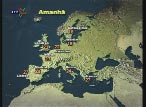
From the Dish
Thaicom 3 3551H "102.5 Hit Channel" Sr 13333 Fec 3/4 Vpid 2099 Apid 2100 (NOTE this is A TV channel)
Asiasat 2 100.5E 3900V "TVB" Sr 16000 Fec?? pids?
Asiasat 2 100.5E 3896? "4:2:2 CCTV-1 TVB Feeds"
Pas 8 CMT FTA for a while due to a problem at Napa
Pas 8 12726H Sr 25728 Fec 7/8 Vpid 833 Apid 834 "Animal Planet FTA"
NEWS
Pakistan Television corporation is embarking on its "Olympic Transmission" on PTV-1
according to Pakistan Standard Time from Friday 15th September.It will be almost
12 hours duration transmission, which will be concluding on 30th of September.
Due to some technical hickups, our valued viewers might have to face inconvenience.
Kindly bear with us for these unavoidable problems.
http://www.ptv.com.pk/olympics_sydeny_2000.htm
22/9/00
Not much today either :-( don't forget to sign up to Apsattv's emailing list up the top of the page the more that sign up to it the more discussion and of use it can be to people.
From the Dish
PAS 2 169E Updates on 3901 H:
BVN TV is now encrypted.
TV Chile has replaced CNBC US on PIDs 1460/1420.
TV Chile has left PIDs 1360/1320.
Palapa C2 113E "ETTV Shopping" has replaced Tzu Chi TV on 4000 H and 11130 V SID 13, PIDs 45/56.
Asiasat 2 100.5E "RTP Internacional" has started on 4000 H PIDs 517/700.
ST 1 88E "ETTV Shoppin"g has replaced Tzu Chi TV on 3632 V SID 13, PIDs 45/56.
Intelsat 704 66E EBU feeds on 11514 V, MPEG-2, Sr 26726, Fec 7/8.
NEWS
* NDS encrypts Doordarshan channels
Doordarshan, India's national public service broadcaster, has deployed NDS
Open VideoGuard digital conditional access to create a platform for its next
generation of digital entertainment and interactive TV services.
Doordarshan's sports channel that went live on 14 September 2000 marks the
first time that any Doordarshan broadcast signal has been digitally encrypted.
The secure broadcast of Doordarshan's sports channel is being delivered to
6,500 cable operators, enabling viewers nationwide to watch the Sydney 2000
Olympics with digital quality video and audio. The system is exclusively
protected by NDS Open VideoGuard conditional access.
* AsiaSat 4 on Atlas III
Asia Satellite Telecommunications company Limited (AsiaSat) has signed a
Launch Agreement with International Launch Services (ILS) to launch AsiaSat 4
aboard an Atlas III rocket in the first half of 2002.
AsiaSat 4, AsiaSat's fourth satellite, will be positioned at the orbital slot
of 122 degrees East. It is a Hughes HS601HP satellite, carrying 28 C-band and
20 Ku-band transponders with an operational life of 15 years. The C-band payload
will offer extensive footprint similar to that of AsiaSat 2 and AsiaSat 3S. The
Ku-band payload, consisting of 16 Ku-band transponders operating in the FSS
(Fixed Satellite Service) frequency band and four operating in the BSS
(Broadcast Satellite Service) frequency band, is designed for providing high
power coverage and spot beams for selected areas.
The Atlas family has achieved 52 consecutive, successful flights and the
Atlas 2 series has a 100 percent success rate. The AsiaSat 4 contract brings to
15 the number of contracts signed in 2000 for future launch contracts.
* GE-1A arrives at Baikonur
Lockheed Martin Commercial Space Systems reports that the GE-1A telecomms
satellite it has designed and built for Americom Asia-Pacific has recently been
shipped from Lockheed Martin's facilities in California to the launch site in
Kazakhstan for an early October launch [probably 4 October.]
The GE-1A is an all KU-band satellite composed of 28 active transponders. The
satellite will feature three beams covering China, Northeast Asia and the
Philippines and South Asia including India. Americom Asia-Pacific is a joint
venture between GE American Communications and Lockheed Martin Global
Telecommunications.
21/9/00
Not much happening today newswise or anything wise. I am in need of more screenshots especially of different Olympics sporting events and medal presentations. Is there any Olympics coverage on Ekushey tv Asiasat 3? What happening over at Satfacts site? Testing their new design?? go take a look.
From my emails & ICQ
Bill R supplies
Optus B1 12422V Sr 8700 3/4 Vpid308 Apid256 0845UTC ''Olympic soccer feed "

From the dish
Palapa C2 113E "Star TV " back? 3500H , 3580H Sr 26850 reports needed of this one
Asiasat 2 100.5E 3896V "4.2.2 Olympics feeds" Sr 20000 Fec 3/4
ST 1 88E 3506H "Rainbow Channel" Sr 23437 Fec 3/4 Vpid 772 Apid 773 Now Encrypted (Nagravision)
20/9/00
Livechat in the chatroom tonight 8.30pm Sydney time onwards for the latest Olympics feeds and news.
From my email and ICQ
Craig
Re: Olympic coverage on Thai stations. Evidently it is being covered by
several TV stations on a rotating "pool" basis. Sunday coverage was....
Thai Channel 3, 3950 (Thaicom 2) 1400 - 1800 Thai time
Thai Channel 9, 3770 (Thaicom 2) 1400 - 1800 Thai time
Coverage yesterday (Tues) was.....
Thai Channel 5, 3917 (Thaicom 2) 1400 - 1800 Thai time
Thai Channel 11, 1400 - 1800 Thai time
I'm unable to check but according to Bangkok Post coverage today (Wed) will
be.....
Thai Channel 7, 3750 (Thaicom 2) 1400 - 1800 Thai time
Tomorrow it will probably change again!
Greg
Bill R Supplies this info
Pas 2 169E 3901H "BVN TV" Sr 30800 fec 3/4 Vpid 1260 Apid 1220

Optus B1 160E 12326H "Network 7 Feed" Sr 7028 fec 3/4 Vpid 208 Apid 256
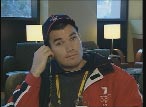
From the Dish
Pas 2 169E BVN TV has replaced TV Chile on 3901 H Sr 30800 Fec 3/4 Vpid 1260 Apid 1220.
LMI AP-1 130E NTV (+8h) has left 3675 L
Asiasat 2 100.5E The occasional feeds on 3896 V have moved to 3906 V Dig, SR 20000 FEC 3/4.
NEWS
WorldSpace Debuts Service in Asia
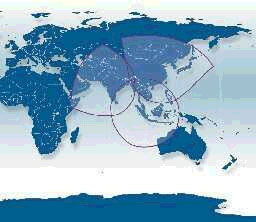
AsiaStar's coverage area in Asia. (WordSpace photo)
/Satnews Asia/ -- WorldSpace announced that as of this date, the company's premier direct-to-person satellite audio and multimedia broadcasting service began transmitting a wide array of multilingual audio programming across the continent of Asia.
As of September 12, news, music, entertainment and educational programs began flowing from the three broadcast beams of the WorldSpace AsiaStar(TM) satellite launched into orbit last March 21, 2000. The AsiaStar satellite supplies more than 40 channels of crystal clear digital quality audio programming and multimedia content to the people of Asia through each of the three beams on the solar-powered satellite. Each beam covers an enormous territory -- 14 million square kilometers -- and together will cover nearly all of Asia, including China, India, Indonesia, Malaysia, Philippines, Singapore, Thailand and other ASEAN nations.
Listeners will use special WorldSpace-branded satellite receivers manufactured by Hitachi, JVC, Panasonic, and Sanyo to receive broadcasts directly from AsiaStar.
"What began over 10 years ago as an idea scribbled on a paper napkin is now closer than ever to becoming a reality," said WorldSpace Chairman and CEO Noah A. Samara. "We have completed the first two stages of our mission to provide an unprecedented variety of world-class news, information and entertainment to people of the world who until now have been under served by traditional radio sources."
AsiaStar is the second of three satellites to be employed by WorldSpace. The first, AfriStar entered commercial service in October of 1999 covering Africa, the Middle East, and the Mediterranean Basin. Each satellite is capable of broadcasting over 40 local and international audio and multimedia programs of multilingual news, music, entertainment, and educational content to audiences over the unique WorldSpace digital satellite receivers.
The WorldSpace multilingual service offers a wide variety of audio programming with digital-quality sound. Listeners can choose news from the BBC, CNN, or Bloomberg, or the best of regional radio from MBC, MTV Asia, BNT, RCS, Radio Mid Day and others. Programming is broadcast in several languages, including Mandarin, Malay, Thai, Hindi, Tamil, and English.
Using its state-of-the-art studios in London and Washington, DC, WorldSpace has also created its own original programming, from modern rock, contemporary pop hits and global dance, as well as spoken word programming for both children and adults.
"Our vision has always been to bring an excellent broadcast service to a huge audience," said Mr. Samara. "So, we're overjoyed to be launching our business in Asia, the largest and most highly populated continent on Earth. We are highly confident WorldSpace will create vast new opportunities for broadcasters, advertisers and listeners across this remarkable region."
Four of the world's leading consumer electronics manufacturers -- Hitachi, JVC, Panasonic and Sanyo -- have designed and manufactured the special receivers needed to receive the WorldSpace service. More than 100,000 receivers have been manufactured and are being sold through the manufacturers' retail outlets, as well as through additional distribution channels arranged by WorldSpace. To support receiver sales, an extensive advertising campaign has begun and an array of sales training materials, point of purchase materials and working receiver display models have been developed and distributed to retailers in our service launch countries.
New, powerful satellites and digital technology built into the special receivers make this service possible. The receivers feature flat antennas and use tiny chipsets that consists of two micro-integrated circuits that process the satellite transmissions. The receivers can be powered by a direct electrical connection or by battery.
WorldSpace also holds a ten percent stake in the Freeplay Energy Holdings Limited of South Africa -- makers of the wind-up radio technology -- where research is ongoing for using this feature with some WorldSpace radios manufactured in the future.
While the WorldSpace signal can be received anywhere in Asia, the company will concentrate its sales and distribution efforts first in Singapore, India, and Indonesia. Malaysia, Thailand, the Philippines and other ASEAN countries will follow in 2001.
Headquartered in Washington, DC, WorldSpace was founded in 1990 to provide direct satellite delivery of digital audio and multimedia services to the emerging markets of the world, including Africa, the Middle East, Asia, Latin America, and the Caribbean. The WorldSpace satellite network will consist of three geostationary satellites. The first two satellites, AfriStar and AsiaStar, were successfully launched October 28, 1998 and March 21, 2000 respectively. The third satellite, AmeriStar, will follow in 2001. Each satellite has three beams with each beam capable of delivering more than 40 channels of crystal clear audio and multimedia programming directly to portable receivers. Once completed, this unique global service will transmit quality information, education and entertainment programming to a service area that includes 4.6 billion people.
Multimedia Satellite Services for the Asian Market
by Peter I. Galace*
From www.satnewsasia.com
As the Asia Pacific region continues to recover from the currency crises, orders for satellite services are again experiencing rapid growth, with multimedia Internet applications enjoying a lead because of the rapid increase in Internet traffic in the region. The huge growth and consequently huge bandwidth requirement have encouraged massive deployment of broadband Internet solutions. There are various technology options but most are using advanced satellite technology.
This October, Intelsat is set to launch new broadband VSAT Service, an advanced bandwidth-on-demand system allowing corporate network and Internet service providers to offer cost-effective and rapidly deployable high-speed communications solutions for the region. It will be available to Asian customers via APR-2 satellite located at 110.5°E this October. The same service will also be available for N.E. Asia customers via Intelsat’s IS-804 at 64°E by January 2001.
Intelsat owns and operates a global communications satellite system providing capacity for voice, video, corporate/private networks and Internet in more than 200 countries and territories.
Intelsat’s broadband VSAT service will provide high-speed connectivity for a wide range of network topologies, such as virtual private networks (VPNs), star, mesh and hybrid solutions to support customers' wideband application needs, including WAN/LAN interconnections, video-conferencing, multicasting, tele-education and tele-medicine. The system can also meet the burgeoning demand for thin route Internet backbone access.
In June, Itelsat and Sino Satellite Communications Company Limited (SINOSAT) also announced an agreement to give INTELSAT an option to lease capacity on the SINOSAT-1 satellite located at 110.5°E. SINOSAT will provide up to six 36 MHz C-band transponders to INTELSAT to meet increasing customer demand in the Asia Pacific Region.
SINOSAT-1 has linear C-band landmass coverage, which is ideal for Internet backbone connections or ISP access, regional business voice/data networks, regional backbone networks, multimedia, VSAT/virtual private networks, and video contribution and distribution networks.
SINOSAT serves satellite telecommunications network users from various domestic organizations, and also extends its services to customers in the Asia Pacific Region.
In July, Intelsat agreed to provide first DS-3 Satellite Service to the Philippines, through Philippine Communications Satellite Inc. (Philcomsat) to fulfill growing Internet demand. The three-year agreement between Philcomsat and ATC Teleports, Inc. will involve the lease of a duplex 45 Mbps service on the Intelsat 802 satellite at 174°E to provide a duplex link between the Internet backbone in the U.S., via ATC Teleports' facility in Brewster, Washington and Philcomsat’s facility at Pinugay Baras/Tanay Rizal, Philippines.
Regional satellites are also shifting to satellite-based broadband Internet services.
Thailand’s iPSTAR-1
Last August, Shin Satellite Public Company Limited of Thailand awarded a contract to Space Systems Loral of the United States Loral to Build iPSTAR-1. The new satellite will be the fourth for Shin Satellite, but the first specifically designed by the company to deliver broadband communications and interactive broadcasting services.
iPSTAR satellite construction should be completed within 2002 and delivered for launch by the end of the year at an estimated cost of US$350 million.
"We realized several years ago that the growing demand for data communications, driven by the Internet, was leading to a convergence of communications and broadcasting," Shin Satellite Chairman Dr. Dumrong Kasemset explains. "We therefore decided to commence research and development in order to look at satellite design in a new way, one that would be tailored to meet the future demand for high bandwidth to support multimedia and interactive services," he said.
IPSTAR-1 will be the first of a new generation of broadband satellites that will act both as an Internet backbone connection to fiber optic cables for ISPs and as a last-mile broadband Internet service to consumers, competing with coaxial cable and ADSL. It will have a total of 100 beams: 87 Ku-band spot beams, three Ku-band shaped beams and 10 Ka-band spot beams. It is scheduled to begin service in early 2003 and will remain in geostationary orbit at 120 degrees East for 12 years, serving the entire Asia Pacific region.
Shin Sat is a wholly owned subsidiary of Shin Corporations Plc., Thailand's largest telecommunications company. Shin Sat currently operates three satellites, Thaicom 1A, Thaicom 2, and Thaicom 3, which provide a range of telecommunications services to customers in Asia, Australia, Africa, the Middle East, and most of Europe, managed through the company's control center near Bangkok.
Japan goes all out
The Japanese government decision to allocate about US$11.9 billion for the construction of fiber optic cables and other IT infrastructure for the year ending March 2002 will further push Japan as an Internet power. (See Top Stories for September). With the amount, the Japanese government is expected to improve the country's Internet infrastructure by investing in high-speed networks and cutting the red tape that stymies e-commerce.
Last year, the Ministry of Posts and Telecommunications granted permit eight companies, including a firm in which the Nippon Telegraph and Telephone Corp. group has a stake, to move into digital satellite data broadcasting, which will begin service later this year.
With digital data broadcast, subscribers will be able to hook up to the Internet through their television, enabling them to shop online and receive a variety of other services.
NTT Communications Corporation and Japan Satellite Systems Inc. (JSAT) have been preparing for multimedia satellite services. In July last year, JSAT, which operates five satellites and NTT, operator of two satellites, agreed to work together by combining their satellite resources. Responding to to the growing demands for the Internet-based services, the two firms agreed to cooperate in providing high-speed satellite Internet/Intranet services.
Tokyo-based NTT Communications last August 31 also announced NTT Communications' successful completion of its tender offer for Verio, the world's largest Web hosting company, which is primarily serving the small and mid-sized business markets. The total value of today's transaction is approximately $5.5 billion.
The acquisition of Verio by NTT Communications will create a strong new international competitor, ranking among the top IP service providers globally. Together, NTT Communications and Verio will immediately provide customers of all sizes in the U.S., Japan, and throughout Asia with a complete range of Internet-based business services - from high-quality IP network services including global connectivity, network management and IP-VPN, to advanced Web-based business solutions, including Web-hosting and e-commerce platforms.
Hong Kong’s APT and AsiaSat
Hong Kong’s APT Satellite Holdings, which operates the APSTAR satellite systems, is now offering VSAT Internet services supporting Internet access across all protocols including Transmission Control Protocol/Internet Protocol (TCP/IP), Hyper-text Transfer Protocol (HTTP), video/audio streaming and Voice Over Internet Protocol (VOIP).
APT Satellite aims to establish Hong Kong as an Internet traffic hub for both Internet Service Providers and Internet Content for north Asia, including mainland China. To pursue this goal, APT is currently investing in both satellite- and cable-based infrastructure over the next few years to support the routing of Internet traffic through Hong Kong, as well as encourage the development and hosting of innovative and localized Internet sites in the SAR.
The company says it plans to invest between HK$200 million and HK$300 million over the next three years to ensure its ability to provide sufficient capacity and quality services to its customers.
Recenty, APT Satellite and SingaSat Private Limited, a wholly-owned subsidiary of Singapore Telecommunications Limited (SingTel), announced the formation of a joint venture agreement forming APT Satellite Telecommunications Limited (APT Telecom), which is 55 per cent owned by APT Glory and 45 per cent owned by SingaSat.
Indicating the opportunities opening up for the newly-formed company, APT Telecom was granted an external satellite-based Fixed Telecommunication Network Services (FTNS) license in Hong Kong on 19 June 2000. It was awarded the license by the Office of Telecommunications Authority of Hong Kong.
APT Satellite owns and operates three satellites -- APSTAR-I, APSTAR-IA and APSTAR-IIR -- which provide coverage to more than 100 countries across Europe, Africa and the Asia Pacific region, reaching a total of 75 per cent of the world's population. It is 51 per cent owned by Hong Kong-based APT Satellite International Company Limited (APT International). SingaSat last month doubled its stake in APT International.
Another Hong-Kong based company, Asia Satellite Telecommunications Company Limited (AsiaSat), has also recently announced the launch of a broadband infrastructure platform on AsiaSat 3S through its investment in PhoenixNet, a joint venture company that AsiaSat established last year.
"The rapid growth of the Internet in Asia coupled with enriched multimedia content have generated enormous demand for better infrastructure that allows high speed and high volume transmission services particularly in areas not well served by a broadband capable terrestrial network. With satellite’s ability to serve vast territories as well as cost-effective point to multipoint distribution, AsiaSat with the largest audience access in Asia is no doubt the quality satellite platform for broadband applications," Peter Jackson, Chief Executive Officer of AsiaSat, also Chairman of PhoenixNet said
PhoenixNet is a joint venture company of which 36%, 51% and 13% are owned by AsiaSat, Tech System Limited (TSL) and Telecom Venture Group (TVG) respectively, with strategic support from Société Européenne des Satellites (SES), one of AsiaSat’s major shareholders. Services are marketed under the brand name of SpeedCast on AsiaSat 3S, AsiaSat’s third pan-Asian regional satellite.
The SpeedCast family of services includes SpeedCast Broadband offering home and business users high-speed Internet access service. Using existing DTH (Direct-to-Home) dishes or Satellite Master Antenna Television (SMATV) system in multi-storey residential buildings, users with a set top box or a PC card can enjoy Internet access at a download speed of 1.5 Mbps, which is around 23 times faster than a 64 Kbps (ISDN) line.
Allied services such as SpeedCast Multimedia and SpeedCast Corporate Broadcast will also be launched across Asia. The former offers multimedia content for distribution and caching, providing up to 30 channels of content including educational, business and entertainment channels. SpeedCast Corporate Broadcast will provide private network streaming of services such as Private TV and File Delivery, ideal for corporations that require dissemination of video and information to a distributed base of offices or customers. Multicast via satellite allows users to reach numerous sites simultaneously and cost effectively without the inherent delays of unicast delivery.
AsiaSat 3S is a Hughes HS-601HP model satellite, with 28 C-band and 16 Ku-band linearised transponders and an estimated 16-year operational life. The C-band footprint on AsiaSat 3S covers over 50 countries in Asia, the Middle East, Australasia and the Commonwealth of Independent States. The Ku-band coverage consists of two high powered fixed beams serving South Asia and East Asia, as well as an in-orbit steerable beam.
AsiaSat, is one of the leading regional satellite operator in Asia, serving over two-thirds of the world’s population with its satellites. AsiaSat satellite system provides services to both the broadcast and telecommunications markets. AsiaSat delivers over 100 analogue and digital television channels and 90 radio channels reaching some 70 million households, with more than 250 million viewers across the Asia Pacific region.
Many telecommunications customers use AsiaSat for services such as public telephone networks, private VSAT networks and high speed Internet and multimedia services.
Philippines
Philippines’ Mabuhay Satellite has also jumped on the bandwagon. Mabuhay Philippine Satellite Corp. now offers cost effective and high-speed Internet access by capitalizing on strategic partnerships with teleports based in Oahu, Hawaii. Mabuhay’s IP services use the latest DVB and Multi-Protocol Encryption Technologies and are delivered throughout the entire Asia-Pacific Region.
Mabuhay’s partnership with Hawaii teleports gives several advantages. First, Hawaii is the gateway to the US where a majority of the Internet bandwidth is hosted. Hawaii is also a major node for the submarine cable systems such as Southern Crossing connecting New Zealand, Australia and Asia and the US mainland with a fully redundant capacity of 80Gbps. In addition, Hawaii hosts major telecommunications companies like AT&T, GTE, Sprint, UUNET, GST, Time Warner and MCI WorldCom, all of which provide leased line connectivity and frame relay services to the US mainland.
Indonesia’s Garuda Satellite
Even Indonesia’s ACEs International Garuda 1 satellite, dubbed the world's first regional satellite-based mobile telecommunications system specifically designed for the Asian market, will be able to provide voice, facsimile, data and Internet services through hand-held mobile and fixed terminals throughout.
At CommunicAsia 2000, Ericsson and AceS in June, visitors were given the chance to trial the Ericsson R190 Satellite phone – the smallest satellite phone available world-wide -- in its first public demonstration. The dual mode handset is specially designed to support the ACeS (ASIA Cellular Satellite) service, as well as roam on GSM networks. The phones are also capable of connecting to the Internet and sending e-mail messages in both satellite and GSM modes.
Visitors participating in the first ever live public demonstration of the Ericsson R190 Satellite/GSM 900 dual mode phone, were offered free satellite calls to any destination in the world: a unique opportunity to experience the exceptional voice clarity and features of the phone and the ACeS service for themselves.
With initial retail pricing less than US$1.00 per minute, ACeS will be the world's most affordable satellite telephony service. ACeS service will be initially offered in eight licensed Asian countries covering a population of 1.7 billion, and negotiations are under way with additional countries.
The Ericsson R190 Satellite phone is expected to be launched in Indonesia in September 2000, followed by a roll-out across Asia in the months following. ASIA Cellular Satellite (ACeS) is the first regional satellite-based, handheld mobile telecommunications system designed exclusively for the Asia Pacific region. ACeS will offer dual mode (satellite -- GSM 900) voice, data, Internet services and global roaming capability to subscribers at a competitive cost.
ACeS is co-owned by PT Pasifik Satelit Nusantara of Indonesia (Nasdaq: PSNRY), Lockheed Martin Global Telecommunications of the USA, the Philippine Long Distance Telephone Company and Jasmine International of Thailand.
Microsoft & Measat multimedia tie up
In March this year, Microsoft Corporation announced an equity investment into MEASAT Broadcast Network Systems (MBNS) as part of an agreement that will help shape the development of new multimedia and interactive TV services for Asia.
MBNS has digital broadcast and Internet operations in Asia under the ASTRO brand. The strategic relationship will involve joint development of multimedia and interactive services to help propel the provision of satellite-delivered, broadband, IP enhanced multimedia and interactive services into homes and businesses across the Asian region.
The two firms agreed to work together to develop new interactive content for TV and the Internet, based on ATVEF (Advanced Television Enhancement Forum) standards, utilizing both MBNS' significant content production capabilities and Microsoft's world-class software. They will explore opportunities for collaboration on co-branded Internet portals, e-commerce applications and enhanced programming of content for Microsoft's MSN Asian sites.
19/9/00
Those of you wondering where all the NEWS is theres not much around at the moment. Should be some tommorow. Theres a new Csat Online satellite magazine click the logo to load it. Theres not much NEW news in there and be sure to turn your speakers off or the annoying music on there will drive you mad.
Anyone got any more or matched the DX numbers to freqs? If you dont know what these DX numbers are they appear on the feeds top right corner. If you go to www.olympics.com and click on each sport they have live screengrabs from what appears to be the offcial feeds, E.G go to Equestrian see its on DX 30 and if you know the frequencys you know where to find it!
DX 32 Shooting
DX 30 Equestrian
DX 29 Table Tennis
DX 28 Weightlifting
DX 27 Hockey
DX 25 Handball
DX 24 Basketball
DX 23?28? Swimming
DX 22 Fenceing
DX 21+22 Indoor Volleyball
DX 20 Softball
DX 17 Badminton
DX 15 Archery
DX 13 Baseball
DX 13 Waterpolo
DX 11 Judo
DX 10+23 Tennis
DX ?? Football
NO Canoe/kayak slalom
NO Boxing
NO Rowwing
DX 08 Beach Volleyball
DX 07 Sailing
DX 03 Cycling
DX 02 Artistic Gymnastics
From my email & ICQ
Here's one for those with Auto Symbol Rate IRDs
Big signal (in NZ) I701 4060R but don't know the Sr. Possibly an Olympics feed.
Only came up in the last week or so on one of TVNZ Sat. Service transponders but not at usual Sr 5632.
Perhaps someone could investigate this for us all.
Cheers
Peter Eade
Milan, Supplies this frequency via the chatroom
I701 180E "Giarc Olympics feed" 3762 RHC Sr 29900 Fec 7/8
B.Richards supplies freqs plus pics
Optus B1
12675V Sr 6110 Fec 3/4 Vpid 4194 Apid 4195 "Table Tennis" 1002 UTC
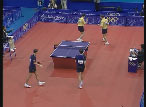
12331V Sr 6200 Fec 7/8 Vpid 33 Apid 34 "Girl testcard" 1000 UTC

The aboves a classic testcard I can remember it being on TVNZ back in the late 70's!!
From the Dish
PAS 2 169E
Occasional Sydney feeds on 3860 V, 3902 V and 4110 V, Sr 27686, Fec 2/3.
PAS 8 166.5E
Lakbay TV is back on 3813 V, MPEG-2/clear, Sr 5044, Fec 3/4, PIDs 4096/4097.
Studio 23 on 3880 V (MPEG-2) is now in clear.
MTV India has started on 3740 H PIDs 385/386.
Occasional Sydney feeds on 4180 H Sr 26050 Fec 7/8.
Optus B1 160E
Occasional feeds on 12675 H and 12702 H Sr 6610, Fec3/4.
18/9/00
Livechat in the chatroom tonight 8.30pm Sydney time (yes chats still on might be a bit quiet in there but we will see how it goes)
Todays update delayed by an Internet Outage
More channels added in the FTA Olympics section I802 added to the Olympics feeds page
From my email & ICQ
Craig
FYI, the following stations (FTA / analogue) have been transmitting the
Olympics.
Malagasy, 3980 (LM1) - French commentary
TVRI, 3840 (Palapa C2) - English commentary, extensive coverage
RTM, 3885 (Measat) - Malay commentary
DD1 - National (this is already noted on your website. Note that coverage isfrom 1500 - 1900 & 2300 - 0530 Indian time). English / Indian commentary.
Thai Channel 3, 3950 (Thaicom 2) 1400 - 1800 Thai time
Thai Channel 9, 3770 (Thaicom 2) 1400 - 1800 Thai time
The Brunei/Singapore station (Palapa C2) broadcast the opening ceremony as
did one of the Chinese stations located on Apstar 1A. Haven't seen any
further coverage on either of these (but I did not check regularly).
GREG
I have observed the following feeds, related to the Olympics, on Optus B1:
12320 V "BBC Sydney(C/A)" Sr 6110 Fec 3/4 Vpid 33 Apid 34
12335 V "BBC Sydney (Audio Feeds)" Sr 6110 Fec 3/4 Vpid 33 Apid 34
12368 V "Mediasat DSNG" Sr 6110 Fec 3/4
12408 V "France2" Sr 6620 Fec 3/4 Vpid 513 Apid 256
12677 H "NDR-SH-Magazin (German Television)" Sr 6110 Fec 3/4 Vpid 4194 Apid 4195
12330 H "Seven Network Feeds" Sr 7100 Fec 3/4 Vpid 308 Apid 256
12705 H "Massterknik" Sr 6110 Fec 3/4 Vpid 308 Apid 256
Cheers
John McDermott
From the Dish
Asiasat 3 KU active on 12745 V 6620 Fec 3/4 anyone had a look for this?
NEWS
Zee launches brand new game show
Stakes worth Rs. 10 crore to be won
You`ve waited and waited for so long!!!!.... And you`ve heard and heard
so much!!!!..
15th September, 2000
And the time has finally arrived ...... as the dark silhouette of the
sun fades. As the curtains lift. And as dazzling lights shine on a
stage, where Zee Network unveils to its viewers, the most awaited and
highest paying mega-game show in the history of television....
`Sawaal Dus Crore Ka`
Come October and Zee Network will launch its greatest and grandest new
mega-game show which offers you not 1, or 2, but 10 crores of rupees.
This brand new mega-game show, `Sawaal Dus Crore Ka`, is a brand new
home-grown programme, not borrowed from abroad but developed in-house.
With transparency in the process of participant selection and an element
of greater interactivity being the hallmarks of the mega-game show, Zee
Network viewers promises its viewers a rich visual feast.
This big-ticket mega-game show prize of Rs. 10 crore will have the
simplest of procedures and rounds that will be interactive, not merely
for those in the studio but also others at home.
Thus, greater interactivity, high degree of suspense, faster paced and a
high stake mega-game show is what `Sawaal Dus Crore Ka` is all about`.
Zee TV has been known to offer its viewers quality programming which is
fresh and innovative. Thus this initiative is only a continuation of our
endeavour to provide clean wholesome family entertainment. Promising and
providing delivery of the best quality programming of appeal across the
widest possible cross-section of viewers in India and overseas.
17/9/00
Not much happening today, it seems many are sitting in front of the box watching the games. Dishs all over Australia are collecting dust. Channel News Asia to officially launch tommorow?? Has anyone checked the russian sats for Olympics coverage?
Olympics coverage from the following channels added to Olympics fta section on the feeds page
RCTI Palapac2
DD1 and DD2 "Metro" Insat 2e
CNBC U.S
From my email & ICQ
Pete in the U.S.A reports lots more analog reception from I802 960/980mhz RHC audio 6.58 Olympics Vollyball, Sailing,Gymnastics, and Baseball these feeds appear to be for Korea. Someone asked about the frequencys these convert to 4190 RHC and 4170 RHC
Bill. R reports
Optus B1 0515 UTC
12675 Horz Sr 6610 3/4 Vpid 4194 Apid 4195 "Olympics Feed Table Tennis"
12702 Horz Sr 6610 3/4 Vpid 308 Apid 256 "Olympics Feed Live Camera Sydney Opera House"
12431 Vert Sr 4500 3/4 Vpid 308 Apid 256 "Olympics Feed Live @ Bontany Beach Sydney"
R.Anthony reports
MTV India (EPG Card is MTV8) is up (PowerVu encryption; currently FTA)
on PAS-8 3740(H); SR 27500; FEC 2/3 (A/VPIDs unknown).
MTV8 (MTV India?) was quiet after the end of the replay of the Video
Music Awards early in the evening yesterday, but I just caught a sight
of US videos on that channel. They seem to be doing a lot of testing at
the moment.
From the Dish
Pas 8 166E "CNBC US" 3940 H Sr 27690 Fec 7/8 Vpid 2260 Apid 2220
CNBC US has started also on 3900 H Sr 27500 Fec 3/4 Vpid 514 Apid 670.
NEWS
Olympic sites being monitored for video ban
By Mike Snider, USA TODAY
A squad of cybercops is patrolling the Internet during the Olympic Games.
Their assignment: enforce the International Olympic Committee's ban on
video - an edict that prevents you and other Web surfers from watching
Olympic competition online.
This security team includes Datops, a Paris-based data intelligence company
founded by a former fighter pilot, and NetResult, a new company created by a
trio of U.K. digital-rights management firms. The IOC deems it necessary to
protect its digital rights in part because of the 15-18 hour time difference
between the events' unfolding and their broadcast for U.S. TV viewers.
This Olympics is the first during the cyber-age. However, television rights
were sold to NBC in 1995 at a time when only 15 million or so worldwide
surfed the Web. Now, the USA alone has about 70 million surfers.
The IOC plans to discuss future digital rights for the Olympics this fall.
But to protect its turf for now, the IOC has called on Datops and NetResult.
For the last two years, Datops monitored the Net to give the IOC a sense of
"how it was perceived," says Datops CEO Eric Kalfon, in the wake of
allegations that members were bribed during recent site-selection processes.
"Then when the IOC decided to launch this job they asked us to compete," he
says.
The company was created in 1995 by former French navy fighter pilot Louis
Gay and current chief technology officer Olivier Massiot, an expert in
artificial intelligence.
Its Pericles analysis technology sifts through more than 10,000 Net sources
including Web sites and newsgroups, noting references to the Olympics.
Datops then forwards the database of results to NetResult, which begins
shaking down the sites, looking for unauthorized video clips.
The IOC also is gauging Net-centric interest for future rights negotiations.
"This project is as much about understanding how the Internet is using the
Olympics as well as where we find commercial infringements," says Caroline
Townley, managing director of NetResult in London.
NetResult clicks through sites to identify infringers. "We analyze whether
there is video or audio and whether there's commercialized betting or a
commercial use of the rings or symbols," Townley says.
"Is it a fan site that is really keen on the Olympics or is it something
that is trying to associate themselves as if they are an official part of
the Olympics event?"
NetResult expects some infringements to be honest mistakes, such as TV
broadcasters accidentally sending video to their Web sites.
In these cases, the IOC will notify the site about the prohibition of any
Web broadcast of competition video. "It requires companies to make a
change," Townley says.
NetResult does expect to come across "some real pirates who see an
attraction to challenging the whole concept of copyright on the Internet,"
she says.
Netizens might be frustrated about the video ban, but Townley says the IOC
has to "balance that against any potential damage to the money they can
raise to finance the Games."
Game for competition
Some Web sites see an opportunity to steal attention from TV and official
destinations such as NBCOlympics.com and IBM's www.olympics.com, which will
feature immediately posted results.
Top sports sites including ESPN.com and FoxSports.com also plan to post
immediate results, too, and each site plans unique coverage angles.
CBS.SportsLine.com will have interactive bits from track stars Marion Jones
and Michael Johnson, basketball's Lisa Leslie and swimmer Gary Hall .
USATODAY.com plans immediate posting of results, too, and has analysis from
former Olympians such as gymnast Bart Connor, swimmer Matt Biondi and
basketball's Nancy Lieberman-Cline. A "USA G'day" feature will also offer a
video "slice of life" in and around Sydney, says USATODAY.com sports editor
Gary Kicinski. "Because of the 15-hour time difference (between Sydney and
East Coast time) and because NBC is doing everything tape-delayed, for live
results, the Internet is it."
Each day, CNNSI.com will virtually create an Olympic Daily magazine,
showcasing the work of its photographers and writers, along with results and
news, says Steve Robinson, managing editor of CNN/Sports Illustrated, which
includes CNN/SI TV and CNNSI.com.
"Almost all of the medals will be awarded between 4 and 7 a.m. Eastern, so
people will be waking up, logging onto Web sites such as ours when they wake
up or get to work," he says.
16/9/00
Olympics started, things seem fairly quiet. Lots of updates (surprise yeah on the Olympics page) I started a FTA regular channels Coverage section at the top of the feeds page (more reports of FTA coverage wanted). In a few days I may drop all the images from the feeds page to the bottom of the page that way the important stuff the text loads in first. Heres a link you may find usefull each day it lists Uplink info for the Olympics it could be handy for finding who's useing some of those feeds freqs. http://www.tvnewsweb.com/today.shtml
From my email & ICQ
Pete in The U.S reports I802 174E Analog feed "Singapore International News at 10" Every day at 1400-1430 GMT freq details (thanks to BILL for confirming via emailing list) 960/980mhz RHC audio 6.58
Many Pictures and details from Bill.R (B1,Pas2,Pas8 )(added to Olympics page)
Confirming that on Canalsatellite Caledonie, Intelsat 701 at 180:
- TEMPO, 10 am till midnight (Noumea time), FTA (PID Video 173, Pid Audio 132, Pid Syncro 173).
- CSAT PROMO, 24h, FTA at present (PID Video 174, Pid Audio 136, Pid Syncro 174).
- Eurosport CA.
Alain & Christine CORROY - [email protected]
CORROY INTERNATIONAL - http://www.chez.com/corroyac
Tel.: 61 (0)7 5539 5488 - AMVOX: 5579 5141
Hi Craig
As2 3735 Ver sr 5580 has a 3 channel bouquet running at the moment (only for the duration of the olympics I think). It consists of: ARD 1, beaming normal German programming
Eurovision, newsfeed channel. This one had a live broadcast of the Ariane launch of two new satellites, namely, Astra 2B and GE7 Americom
Sydney rev is the third channel, I havn't seen anything on it yet.
Pas 2 3901 Hor (California bouquet) has TVN Chile running normal programming.
Cheers
Hans
(Thanks for that Hans a followup on the TVN Chile website http://www.tvn.cl/channel2/nacion/nprogram.htm for programming)
Hi !
Although I am not living in your part of the world, your page contains many worthful information :-)
But I can help you with the unknown screenshots from the German TV station.
It's indeed "ARD - Das Erste" which is the most important TV program in our country.
This feed might be a refeed for the ARD crew in Sydney.
By the way, did you observe any German feeds from the Qlympics ?
In my opinion, the opening ceremony was really great
Many greetings from Germany (where it's late afternoon at the moment).
Tschüß,
Achim [DX*Ampy]
Games Opening Ceremony was covered via Channel 10 feed on I701 3765 via Pacific Television (www.pactv.com)
From the Dish
NEWS
From www.tvnewsweb.com
The television news agencies have welcomed a last-minute lifting of restrictions that would have severely limited their coverage of the Olympic Games in Sydney.
As reported in Newstalk in July, Reuters and APTN had been told their news crews would be barred from public areas of the vast Homebush Olympic Park for the duration of the games.
Both agencies protested vigorously, and the row was settled only 48 hours ahead of Friday's opening ceremony. After weeks of lobbying, the agencies have finally been granted passes to film news footage in the so-called "common domain" area, a site of several square miles in which the five main stadia are located.
"With this breakthrough Reuters feels that it can report fairly on news relating to the Olympics. This has never been an issue of sports rights, it has always been an issue of news rights."
On Wednesday, the Australian Olympic Committee's broadcasting organisation agreed that Reuters, APTN and CNN will each be granted a permanent day pass to the site. A further eight passes will be made available on a daily basis to other non-rights holders.
The agencies had argued that access to the common domain area was crucial for their coverage - to cover atmosphere, interviews, protests or reporter standups. As the agencies pointed out, hundreds of non-rights-holding broadcasters around the world rely on such coverage, and the proposed restrictions were unprecented in Olympic broadcasting history.
Royston Martin, Head of Sport, Reuters Video News is, understandably, relieved at the breakthrough. Speaking to TVnewsweb from the Olympic arena as he watched the opening ceremony, Royston said: "We're delighted after several months of intense discussion that the IOC and the local organising committee has respected and endorsed the concept of news access to the public areas at this Olympic Games."
With a team of some 25 producers, camera crews and technicians, many of whom had travelled to Sydney from London or Singapore, Royston had been concerned that bureaucracy would have prevented him and his colleagues from doing a proper job.
But for the agencies at least, Olympic coverage is back on track. "The organisation has been excellent," Royston went on, "and with this breakthrough Reuters feels that it can report fairly on news relating to the Olympics. This has never been an issue of sports rights," he added, "it has always been an issue of news rights."
It still is an issue for many television companies around the world who have sent teams to Sydney. An estimated 220 broadcasters have a presence at the Olympics, of which around 180 are, like the agencies, non-rights holders. They will now have to compete in the daily lottery for eight passes which means, as Royston pointed out, they cannot plan ahead or react swiftly to events. In fact, simple arithmetic dictates that many of them will not get a pass at all.
15/9/00
Well only a few hours to go before the Olympics are under way, Its going to keep me very busy with the site updates takeing at least 3 or 4 hours! Please make my efforts a little easier by supplying and checking all details before sending here is the filename formt I would like everyone to try and stick to.
Pas2_3860v_kangaroorace.jpg
Pas8_4140v_spearthrowing.jpg
etc or preferably
Pas2_3860V_beerdrinking-vpid1120-apid1160.jpg
Heres what I will be after tonight dureing the opening ceremony (Please use the [email protected] address for very fast updateing) Any freqs showwing the ceremony! alternative language commentary (if any) Don't forget to check actuall regular non feed channels. I know Guangdong and Heiljiang on Asiasat 2 have Olympics banners on there websites so possibly they are screening a lot live. I will be online all eveing as usual and contactable via ICQ (see above for my number)
I am especially interested in any Feeds via As2/3(yes check as3 KU) Palapac2 (yes check the Indo stations also) I701(also check its neighbours!), How about Pas 4 and Thaicom 3? If you look and can't find anything on a particular sat then post a note saying so via the mailing list! and save others the time looking! Nearly forgot don't forget B1/B3 (yes check analog also, Mediasat) Measat2Ku?? get looking..
From Saturday I will be looking for reports on Actual EVENTS, e.g Basketball from X on freq X, Equestrian from X all day feed on X etc.
Screenshots are especially welcome (please save with the least jpg compression available I dont care if a pic is 300k I can fix that at my end) new shots of any new testcards are wanted as well. (Please note not every screenshot supplied will be used)
From my Emails & ICQ
Geordie has the following for sale please note he is in Taupo, New Zealand I can supply his email if you send me a email.
Good Morning Craig!!
We have the following for disposal, are you interested:
1 Paraclipse Eclipse 12' Mesh Dish
1 Horizon to Horizon Polar Mount
1 Hyundai HSS-100C Digital Receiver
1 Palcom SL-7900RP Analogue Receiver with Dish Positioner
1 CDM 800 Digital Multisystem Standards Converter
1 Satfinder Signal Monitor
1 Chaparrel Sidekick 17K C Band LNB Vertical
1 ADL Feedhorn
1 Paraclipse Polar Mount Only
1 Paraclipse Inside Dish Ring
1 Associated Cables and Connectors
Please reply to:
Lake Taupo Motor Inn
Ph: 0-7-386 8608
Fax: 0-7-386 8609
Two Abc Feeds seen on Pas 8 Ku, reported by Bill .R
Pas 8 KU 12323H Sr 6978 vpid 1160 apid 1120
Pas 8 KU 12313H Sr 6978 vpid 2160 apid 2120

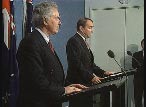
From the Dish
Various Soccer feeds seen and added to Olympics page
NEWS
Star Sports to launch 'Sportsline' on September 25
From Indiantelevision.com
Star Sports, a fifty-fifty joint venture between Star Television and ESPN started in 1996, is launching India's first live sports news programme on September 25.
While talking to the press conference in Mumbai, Manu Sawhney, Managing Director, ESPN Software India said, "Sportsline is one of the biggest in-house programming initiatives for the company. Sportsline will provide the Indian sports fans the most up-to-date news and best sporting action around the world."
Sportsline will be featured three times a day with three repeat telecasts. Sportsline Today, the morning bulletin, is scheduled for 7:00am every weekday morning, which will be updated version of previous night's news. Sportsline Tonight, the evening news bulletins, will be telecast live at 7:30pm and 10:00pm.
Through the half-hour, the news will contain various elements such as international headline news, cricket news, football wrap-up, India diary, sponsored section, cricket rankings, India results and play of the day.
The programmes will be anchored by John Dykes, Alan Wilkins and Misha Grewal, Harsha Bhogale will be exclusive 'onground' hosts. Sunil Gavaskar and Geoff Boycott will be special guests on the show to provide exclusive insights, analysis and forecasts about on-going cricket matches.
ESPN Star has tied up with the various agencies as well as channels for programmes. Dez Carckhill will be the producer.
When asked about the growing competition in Sports channels market, Mr Sawhney while welcoming the healthy competition which can give quality programmes to the viewers, did remark that ESPN Star Sports has already build its brands over the last four years as quality programme provider.
The subscription fees for the ESPN Star Sports is not going to be increased in near future.
Digital pullout spoils boom year for TVNZ
From www.nzherald.co.nz
15.09.2000 - By KARYN SCHERER
A decision to write off nearly $13 million from its aborted foray into digital television has marred an otherwise bumper year for Television New Zealand.
The state-owned broadcaster revealed in March that it had decided to write off nearly $7 million after the Government pulled the plug on its ambitious plans for a digital service this year.
Yesterday, it revealed that it had decided to write off another $6 million, salvaging just $1.6 million of capital costs from the project.
Coupled with its $5.9 million payout to former presenter John Hawkesby, the write-offs put a dent in an otherwise strong performance from the broadcaster for the year ending in June.
After a soft first half, TVNZ enjoyed a bumper second half, with advertising revenue hitting a record $295.8 million - up 6 per cent on the previous year.
The revenue increase follows its highest ratings for more than four years, in a period the organisation described as the most challenging in its history.
Overall revenue was up more than 10 per cent on last year, to $473.4 million.
Lower costs enabled TVNZ to boost its pre-tax profit by nearly a quarter to $88 million, despite the fact that it hired about 140 new staff over the period, largely for its new media operations.
Its after-tax profit was $43.1 million - a 20 per cent increase on last year, excluding last year's one-off gains from the sale of its shares in Clear and Sky TV.
However, the write-offs have meant the result is still not as good as that achieved in 1998, and slightly below the target set by its political masters for the period.
TVNZ has paid the Government a final dividend of $15.1 million, taking its total dividend for the year to $30.2 million.
The dividend is lower than in 1998 and 1996.
It has also warned that is unlikely to be able to match the performance next year, with the weak New Zealand dollar driving up the cost of programmes, bought in US dollars.
Although it has hedging policies in place, TVNZ still expects the fluctuations in the exchange rate to affect its bottom line.
Its fledgling new media business, Nzoom, which became a separate subsidiary in March, is also expected to lose $2.5 million this year. TVNZ does not expect Nzoom to make a profit for a further three years.
Chief executive Rick Ellis was also reluctant to comment on what effect the Government's policies would have on its bottom line.
The digital strategy also remains up in the air. Although it is known to be talking to Sky TV about joining Sky's digital satellite service, Mr Ellis stressed that TVNZ was not ruling out other options.
He maintained it had made "substantial progress" in investigating other ways of delivering digital services, such as UHF, wireless terrestrial, cable and high-speed internet access.
TVNZ has already made it clear it does not want Sky to have monopoly control over the set-top boxes that are necessary to decode digital signals, and Mr Ellis said yesterday that the issue was still some time away from being resolved.
Meanwhile, chairman Ross Armstrong hit back at broker reports that the Government was playing into Sky's hands by encouraging TVNZ to strike a deal with the pay-TV operator.
He said he was "quite astonished" at the reports, and denied he had even discussed the issue with Prime Minister Helen Clark.
14/9/00
Lots happening! Todays page updates seems to be a pictures and feeds special edition.
Feeds, Olympics pages updated with many pictures. Keep an eye on 3902v tonight for more action!
From my Email and ICQ
FTA NZ cricket feed from Zimbabwe last two nights
TVNZ Satellite Services I701 4194R Sr5632 A651 V512 PCR8190
Signal is weak:(NZ) mostly below threshold on 3m with compromise circ/lin feed.
Cheers
Peter Eade
(tune in Darryl Hair is playing Umpire)
This via [email protected]
The Channel 9 feeds on PAS2 3902V 27686 2/3 are being used for CNN Sports
report feeds of the Olympics.11:45 PM Sydney Time Wednesday 13th
This from Bill .R
Asiasat2 3735 Vert Sr 5580 Fec 7/8
Vpid 512 Apid 4112
Vpid 513 Apid 4113
Both are World News Feeds
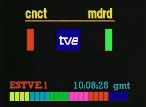

After these feeds 3735 V Sr 5580 Fec 7/8 Vpid 512 Apid 4112 went to German programming from possbily from Ard 1?
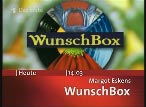

DVB has supplied many pics includeing this great Lights show on 3902v last night (please note this picture has been enhanced)
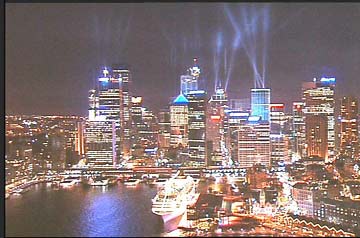
More of DVB'S great screengrabs on the Olympics feeds page!
Hong Kong Jockeys Clubs raceing seen on
Pas 2 169E 4148V Sr 24430 Fec 2/3



From the Dish
Asiasat 3 105.5E 12457H Sr 5790 3/4 "Mystery Signal"
(maybe a feed for Japan Olympics.)
Pas 2 169E "CNBC US" has replaced TV Chile on 3901 H, SID 4, PIDs 1460/1420.
RAI International (radio) has started on 3778 V, APID 2438.
Pas 8 166E "MSNBC and CNBC Asia have started on 3,940H, , SIDs 16-18 and PIDs 2260/2220-2360/2320.

NEWS
TV's quantum leap to Sydney
By OLIVIA HILL-DOUGLAS
From www.theage.com.au
Thursday 14 September 2000
Since grainy black-and-white images of competition highlights at the Melbourne Olympic Games were first broadcast in 1956, television has become the means for most world viewers to join the Olympics audience.
When the Games last came to Australia 44 years ago, the cost of the international broadcasting rights for TV and radio were a mere 77,000 - a far cry from the many millions of dollars paid for the rights to the Sydney Games. Of course, only 5000 Melbourne homes had TV back then and spectators queued outside shops that stocked the new technology, eager for a glimpse of the world's elite athletes.
Tomorrow the opening ceremony of the Sydney Olympics will be beamed around the world and the logistics and coverage from this year's Games will be more comprehensive and infinitely more complicated than in 1956.
Looking back to the Melbourne Games, the set-up seems almost amateurish - with just three cameras available to capture the action from the arena, coverage was limited and presented as a highlights package at the end of each day.
In Sydney, much of the vision distributed by the Sydney Olympic Broadcasting Organisation will be digital, giving clearer pictures and sound in the broadcast. The Seven Network, which paid $81 million for the Australian rights (considerably more than the 80 Seven's media release says the network paid in 1956), will broadcast 23 hours of Olympics programming each day and have access to footage from 955 cameras around the Games sites.
Some 1200 hours of Olympics coverage will be produced for Australian audiences, including pay TV, an increase of 292 per cent on the 308 hours of coverage that came to Australia from the 1996 Atlanta Games.
Not only has the amount of coverage increased, so has the amount spent to broadcast images around the world. It was during the 1980 Moscow Games - despite the absence of the United States team - that the cost of international broadcasting rights really took a leap. From $58 million in Montreal in 1976, the rights jumped to $182 million in Moscow. And that figure has increased by a factor of 10 since then, with the world broadcasting rights in Sydney fetching $2.5 billion.
And, with a projected audience of around 3.7 billion of the 3.9 billion people with access to television, the opportunity for advertisers to reach their target audience is huge.
The US NBC network is paying $1.3 billion for the rights to carry the Olympics, but will make much of that back in advertising revenue, with the average price of a 30-second spot in prime time fetching some $US615,000 ($1.1 million). Four years ago during the Atlanta Games, the same commercial spot cost $US420,000 ($756,000).
It is through television that much of Olympic history has been made. Images like US runner Mary Decker falling over in the 3000-metre race in Los Angeles in 1984; Canadian Ben Johnson winning the 100-metre sprint at the 1988 Games in Seoul in world-record time, only to be stripped of his medal and the record after testing positive to an anabolic steroid; or Romanian gymnastics star Nadia Comaneci, who was awarded seven perfect scores from the judges at the Montreal Games in 1976, are some of those that have captured the world's imagination as they were beamed into homes across the globe.
It is also on television that the darker side of Olympic history has been seen. Audiences watched in horror as eight members of the Palestinian extremist group Black September took 11 Israeli athletes hostage in Munich in 1972. A rescue attempt by German police was foiled when authorities realised the Palestinians were watching events unfold live on TV in the apartment where the hostages were being held.
And one of the lasting images of the Atlanta Games four years ago was that of panicked throngs of revellers in Centennial Olympic Park, where an evening of fun turned to disaster as a pipe bomb exploded, killing two and injuring more than 100 people.
According to the International Olympic Committee, the Sydney Olympics will be the most watched Games to date. And Australia will be no exception. Some 10million urban and 4.5 million rural Australians are expected to tune in to the broadcast, with 120 transmission centres covering 22 cities and regions across the country.
13/9/00
Live chat tonight in the chatroom 8.30pm Sydney Time
From my Emails and ICQ
B.Richards comes up with the goods once again
Optus B1 12420 V Sr 6668 Fec 3/4 "Olimpiadab2000" Card from TVGlobo, Gold Coast
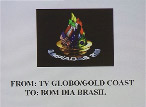
DVB2000 provides these 2 Olympics feeds he didn't supply complete details though
Pas 2 3902V "GTV9 Melbourne" sr ? fec ? Vpid 0550 Apid 0528 PCR 0550
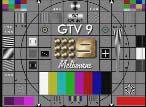
Pas 2 3902V "Espn Brazil Feeds" sr ? fec ? Vpid 0460 Apid 0488 PCR 0488

H.Spitaler emails me saying Pas 8 EB Net (Korean) 3940 H sr27690 seems to have left this spot. It had Korean programming untill recently and for the last couple of weeks only had a test card. Today it has been replaced with MSNBC (same freq etc.) I don't think this is a feed as it's been going for hours.
cheers
Hans
Late update Pas 8 , MSNBC I told you about yesterday is still going strong, looks like it will stay.
CNBC Worldwide has an announcment on Pas 8 3900 Hor sr27500 saying "Coming Soon" This used to be a feed frequency
TVB N Chinese news (Mandarin) now showing programming Pas2 4044 Ver sr6620
He also supplies this great image!
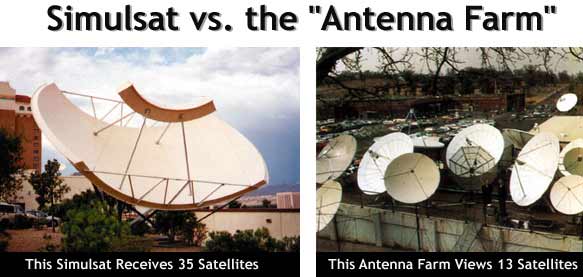
Which one would you prefer?
From The Dish
SatcoDX reports the following (Not to sure on how reliable they are)
Palapa C2 113E 3926H "PTV 4" Sr 4880 Fec 3/4 "It is CLEAR now"
Asiasat 3 105E "Ptv 2/Ptv World" Audio changed
Pas 7 68.5E (This beam dosn't cover Australia this is where Some of the Asian Countrys will be takeing there feed from it probably goes to the U.K as well)
11050 H 6 Games Feeds Sr 26480 Fec 1/2
Olympic 1 Vpid 39 Apid 42
Olympic 2 Vpid 37 Apid 41
Olympic 3 Vpid 43 Apid 46
Olympic 4 Vpid 50 Apid 51
Olympic 5 Vpid 53 Apid 54
Olympic 6 Vpid 56 Apid 57
12/9/00
Sorry for the delay in the site being updated I was out all day. For those wondering about Satfacts site not being updated the word from the chatroom last night was is Bob is away for 3 week in the U.S. Olympics page updated daily sometimes more than once. ScatIndia latest edtion is up also Click the Cover image above for all the latest on Asiasat3, Insats and everything thats happening in that part of the world.
NZ vs Zimbawe Cricket Test start 8pm NZT Tuesday Night?? Is this on Ekushey tv? Or possibly I701 ? reports needed if you see it.
From my Emails
Bill. R supplies
Pas 8"KU" 12491H Sr 6619 3/4 Vpid308 Apid256 "Sydney Olympics Feed"

NEWS
Sydney's costly: Indians settle for Doordarshan
From www.indiantelevision.com
Doordarshan's marketing seems to be working with more and more Indians opting to stay in India and watch the Olympics on Doordarshan than spend a little more than a lakh to go to Sydney.
However analysts watching Doordarshan's marketing of the Games have compared it with ESPNs and Star Sports glitzy advertisements on their bouquet of channels and have critisised Doordarshan for not doing so on its wide network of channels. DD is expecting to rake in Rs 20 crore from ad revenue. Pritish Nandy has received the broadcast management rights for the three DD channels and is claiming that its revenues will soar from Rs 14 crore in '99-00 to Rs 50 crore this year. The fact that low expectations of winning medals and the Indian people's obsession with cricket have not helped either. To add icing to the cake, DD will be flying a 21 member team to Sydney to customise the feed for India and provide special graphics. Analysts however feel that DD would have been better off sticking to the live feed in the form of six channels which it will get from the Sydney Games authorities.
All this talk does however make one feel that the Olympic athletes are not the only ones to perform gymnastics this Olympics.
Discovery to offer two more channels in India
From www.indiantelevision.com
Discovery Communications will bring to the Indian subcontinent two more channels next year, including the popular 'Discovery Health' and another channel which will be a toss between its history channel called 'Civilisation', 'Discovery Kids' and 'Discovery Travel & Adventure'. All these blocs are currently aired on the main channel.
Discovery health would include some India specific programming including Yoga and Ayurveda in keeping with the channel's policy of focussing on local programming.
Discovery has however decided to continue as a stand-alone platform rather than join one of the larger broadcasting bouquets such as Zee, Sony, CNBC or Nickelodeon. National Geographic which is being included in the Star TV bouquet is cutting into Discovery's revenues due to attractive packages offered by Star TV. Discovery markets itself for Rs 5 per subscriber while National Geographic markets itself for Rs 2 per subscriber.
11/9/00
Live chat in the chatroom 8.30pm Sydney time and onwards. A note to those of you useing MIRC to access it, Mirc access to the chatroom no longer works for some reason. Other news Apsattv.com now has its Mailing list up and running (see details below on how to sign up) If you see a feed or some programming of interest send a message to [email protected] and it will go straight out to everyone on the mailing list. this will be a very handy thing to be subscribed to dureing the Olympics. Because within 1 minute you will be notified of anything being posted.
From the Dish
A few aditions done to the Olympics feeds page, seems some of the feeds could be in 4.2.2 format which wont be of much use as most receivers can't handle it.
Asiasat 2 100.5°E 3896V Sr 20000 Fec3/4 "CCTV-1 TVB" 4:2:2
NEWS
Sky heralds revolutionary integrated digibox
New product to launch in Q1 2001
British Sky Broadcasting today announced that Europe’s first integrated Personal Television Recorder – which will combine an enhanced digital satellite set-top decoder with a 40 gigabyte advanced hard-disk recording facility – would go on sale to the general public in the UK in Q1 2001.
The announcement of the new product and its specifications were made to coincide with the start of the annual International Broadcasting Convention being held in Amsterdam.
Sky’s integrated Personal Television Recorder will allow for the recording of up to 40 hours of programming – in the original digital quality – and will enable viewers to:
Pause live digital satellite television broadcasts – viewers will no longer miss crucial moments when they are interrupted in the middle of a programme
Record current and future programmes for later viewing at the touch of a button – no need to set the clock or search for a spare videotape
Automatically record every episode of a series – viewers will never miss their favourite programmes again
Control all recorded programmes just like a VCR (pause, rewind, fast-forward)
In another first, Sky’s integrated Personal Television Recorder will include two digital satellite tuners, meaning that digital satellite television viewers in the UK will be able to watch one live digital programme (or a previously recorded digital programme) while simultaneously recording another for viewing at a convenient time.
The recorder will utilise an extended version of SkyGuide, the electronic programme guide currently in use in 3.8 million Sky digital homes, allowing viewers to record programmes across the next seven days at the touch of a single button. In addition, the fully integrated system means that the all the functionality is incorporated in one single set-top box, using a single remote control.
Unlike other recording devices, Sky has chosen a technology that will record the original encrypted digital signal, ensuring both the quality of the digital recording and the security of the system.
“The first truly 21st century home entertainment product”
Sky’s Chief Executive Tony Ball said:
“Sky’s integrated Personal Television Recorder is the first truly 21st century home entertainment product. It gives viewers greater power to choose what they want to watch when they want to watch it.
“Sky was the first to launch digital television in the UK; the first to introduce interactive services; the first to let viewers shape how they watch programmes with enhanced channels such as Sky Sports Extra and services such as Sky News Active. Yet again we’re leading the way and clearly positioning Sky digital as the leading multichannel platform in the UK.”
Technology partners
Sky’s integrated Personal Television Recorder is the culmination of two years’ development work by Sky and its technology partners NDS, NEC, Open TV and Pace Micro Technology.
The unit incorporates NDS’s XTV™ technology, which enables personalised TV services as well as encrypted recording of all content to be stored on the hard disk, ensuring that decryption of that content remains under the control of the NDS conditional access system.
OpenTV has developed a new multi-pipeline operating system for the device that includes extensions for the hard disk functionality and control of twin digital satellite tuners.
The recording functionality has been integrated into a Sky digibox using hard disk interface and indexing hardware developed by NEC, and the NEC ‘EMMA’ single chip set-top box solution.
The hard disk drive and dual tuner integration has been completed by Pace, which will also manufacture the integrated Personal Television Recorder.
Dr Abe Peled, President and CEO of NDS Group plc, said: “The new XTV™ enabled device provides Sky digital viewers with the world’s most advanced Personal TV experience. Once again NDS and Sky are at the forefront of providing UK television viewers with powerful yet easy to use cutting edge technology. I look forward to working with Sky digital to ensure that consumers obtain a more fulfilling experience through combining a hard drive with the digital set-top box.”
Jan Steenkamp, CEO, OpenTV, said: “Enabling personalised television and providing viewers with choice remains a core focus for OpenTV. OpenTV’s new advanced middleware solution establishes the engine and foundation of this exciting new capability. The UK represents the world’s most advanced digital TV market (source: Strategy Analytics) and we will continue to drive this market and others forward, further establishing Sky and OpenTV as market leaders for advanced digital TV deployments.”
According to Malcolm Miller, Pace's Chief Executive Officer: "Sky digital is continuing to drive the revolution of digital TV in the UK, by launching new interactive services and features. With its new integrated Personal Television Recorder, Sky digital will create the concept of personalised television in the UK, providing viewers with new, easy-to-use features which they have never had before. We are delighted that Sky digital will be the world's first broadcaster to launch Pace's hard disk range of digital set-top boxes.”
NEC Managing Director Tetsuya Hikino commented: “We are delighted to have been working with Sky on this innovative product. Sky has demonstrated once again, its pioneering approach by being first to market with an enhanced digital service. Research shows that Personal Television Recorders will greatly enhance the consumer viewing experience, and Sky has the capability to maximise the potential of such a service. This development program has been extremely exciting and challenging for all involved, and NEC is pleased to be playing a key role in the project’s success by bringing its systems and silicon expertise to the party.”
Three hardware choices
Mr Ball said that the introduction of the integrated Personal Television Recorder would complement Sky’s existing offer of a free digibox and the forthcoming launch in the UK of TiVo’s standalone Personal Television Recorder.
“By extending the range of hardware we offer to UK consumers, Sky is broadening customer choice. Through the introduction of the standalone TiVo Personal Television Recorder, and soon afterwards, the Sky integrated Personal Television Recorder, all UK TV homes can choose to access these great new features. The TiVo Recorder will work whether the viewer receives their television through terrestrial, cable, or digital satellite, while Sky's integrated Personal Television Recorder will offer additional enhanced functionality specifically for digital satellite homes."
The branding and price to consumers of Sky's integrated Personal Television Recorder, an unsubsidised premium product, will be announced in the lead up to the consumer launch.
10/9/00
Lots of updateing done on the Olympics feeds page, be sure to check it everyday for the latest additions. I have a new Image optimizer program which should speed up converting the high quality images that I get sent. I will be setting up a mailing list tonight hopefully. I will post details once its up that means anyone who subscribes to it will get all the latest feeds etc much quicker as any one can post to it.
From my emails & Icq
DVB2000 reports TVB Pas 8 package was FTA for a short time this afternoon
Olympics Feeds
Bill R supplies the following plus pictures
Pas 8 4041 V Sr 27686 Fec 7/8
Vpid 1160 Apid 1120 Test tone no picture
Vpid 1260 Apid 1220 Sound no picture
Vpid 1360 Apid 1320 Test tone no picture
Vpid 1460 Apid 1420 DX 06 Test card
Vpid 1560 Apid 1520 Encrypted PowerVU
Optus B1 12430 V Sr 6668 Fec 3/4 Vpid 308 Apid 256
"NEWSFORCE AUSTRALIA Olympic swimming feeds"
Also on Pas 2 3901H Sr 30800 Fec 3/4 Vpid1460 Apid1420 Temp use of AdocII by TVN Chile
Plus various screenshots of KBS coverage of the Korean teams arrival at Sydney Airport
9/9/00
Nothing happening today!
From my Emails
DVB2000 from the chatroom mentions doing some LNB watercooling tests! (actually his dish was blown into the pool by strong winds)!
Bill R. Reports
Pas 2 3902 V 27686 2/3 Vpid1160 Apid1120 hotel room audio voice-overs olympics (pic supplied but not used)
Pas 2 3803 Sr 6509 2/32 Vpid33 Apid34 "Herbalife Feed"

8/9/00
Big Friday update as usual! Sorry about the delay, Saturdays might be late going up also. Don't forget its the time of the year for Sun outages which could cause a few signals to go missing.
From my Email
B.Richards supplies a load more freqs and images for the Olympics feeds page

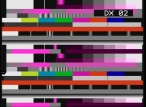
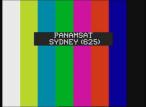

S Johnson reports Zee/Alpha on Optus B3 now encrypted.
B3 - 12,532 GHz (Vt), FEC 2/3, SR 30.000.
(Craigs Note perhaps they finally got a subscriber?) :-)
Troubles with Rai
FTA Sat Services reportsd the following
"I noticed today that both Rai Italian channels had problems which resulted in a barrage of calls from my customers.
On Pas 2, Rai, Art, and Lbc, went off the air for about an hour. Antenna Pacific was ok the whole time, so it wasnt a signal problem. On As2, Rai changed, and changed back, the audio pids".
Anyone else have a problem with it?
Anon supplies this RE: http://www.attisat.gr/FL500_1.html
From: NIKOLAOS ARVANITIDIS [mailto:[email protected]]
Sent: Tuesday, 5 September 2000 7:56
To: Anon
Subject: Re: Flat Antenna
Dear Mr.Anon,
thank you for interest in our product the ATTISAT FL500 Flat Satellite
Antenna. Indeed it's a very interesting Antenna. Actually for the time we
have not yet a distributor in Australia so you can only get it through us
direct. The price for you 149, -EURO + shipment.
You could be the first user in Australia and thats why you get our best
price.
Best regards
Nikos V. Arvanitidis
Sales Director
ATTISAT SA
e-mail: [email protected]
----- Original Message -----
From: anon <[email protected]>
To: <[email protected]>
Sent: Thursday, August 31, 2000 1:41 PM
Subject: Flat Antenna
> Hello there,
> Have looked at your web page and noted the antenna.
> I live in Australia, and wonder if you can tell me what price your product
> is.
> It looks very interesting
> Thank you
> Anon
From the Dish
Many feeds for the Olympics happening on Pas 2
Pas 8 166E "Knowledge Channel" and "Lakbay TV" on 3880 V are now in clear. The other Lakbay TV signal has left 3813 V
Palapa C2 113E "Feed" spotted on 3918H Sr 3050 Fec 3/4 Vpid 33 Apid, someone check this out could be for the games?
Thaicom 3 "DD World" 3600H Sr 26667 Fec 3/4 Vpid 2435 Apid 2436 "DDFeeds" also here on Vpid 2437 Apid 2438
Possible Feeds this weekend
Saturday 9th September
5 am Syd U.S Open Tennis (Anyone seen a feed of this anywhere)
8.30 am Syd Nascar Qualifying U.S
8.30 pm Syd U.S Open Tennis
Sunday 10th September
4 am Syd Tennis Masters Series from Cincinati
10 am Syd Baseball Oakland vs Yankees (Try Pas 2 for this one where usual ESPN feeds are seen)
12.05pm Syd Queensland 500 V8 Supercars (live on FTA in NZ try B1/B3 for a feed)
8.55 pm Syd World Superbikes Championship from Germany
10.45 pm Syd Italian Grand Prix (usually on one of the Indonesions on Palapa C2 live also)
NEWS
From www.asiasat.com
AsiaSat 4 Construction Formally Commences
Hong Kong, 7th September, 2000........Asia Satellite Telecommunications Company Limited (AsiaSat) announced that the construction of AsiaSat 4 has formally commenced following the conclusion of a satellite procurement contract with Hughes Space and Communications International, Inc (Hughes).
AsiaSat 4 is the Company's fourth satellite, scheduled for launch in the first half of 2002. This new satellite will be positioned at the orbital slot of 122 degrees East.
AsiaSat 4, a Hughes HS601HP satellite, will carry 28 C-band and 20 Ku-band transponders and has an operational life of 15 years. The C-band payload is designed to offer pan-Asian coverage, similar to that of the Company's two other satellites, AsiaSat 2 and AsiaSat 3S. The Ku-band payload, offering high power and spot beams for selected areas, will consist of 16 Ku-band transponders operating in the FSS (Fixed Satellite Service) frequency band and four designed to operate in the BSS (Broadcast Satellite Service) frequency band. Assigned by the International Telecommunication Union (ITU) to Hong Kong at 122 degrees East, these BSS frequencies allow broadcasters to offer Direct-to-Home (DTH) service in Hong Kong on AsiaSat 4.
"We are very excited about adding a new member to our fleet of satellites. Our procurement of AsiaSat 4 marks another major milestone of AsiaSat's expanding satellite service for the Asia Pacific region. We look forward to meeting the future demand for satellite-delivered applications by exploring opportunities at this new orbital location," said Peter Jackson, Chief Executive Officer of AsiaSat.
AsiaSat, Asia's leading satellite operator, serves over two-thirds of the world's population with its fleet of satellites. The AsiaSat satellite system provides services to both the broadcast and telecommunications industries. Over 100 analogue and digital television channels and 90 radio channels are now delivered by the company's satellites, reaching over 80 million households, with more than 300 million viewers across the Asia Pacific region. Many telecommunications customers also use AsiaSat for public telephone networks, private VSAT networks and high speed Internet and multimedia services.
AsiaSat is a wholly owned subsidiary of Asia Satellite Telecommunications Holdings Limited, a company listed on both the Hong Kong (SEHK: 1135HK) and New York (NYSE: SAT) stock exchanges. AsiaSat's two major shareholders are China International Trust and Investment Corporation (CITIC) and Société Européenne des Satellites (SES), the operator of Europe's premier ASTRA satellite system.
Zee hires A.T. Kearney to upgrade organisation structure and systems
From www.zeetelevision.com
T o ensure full exploitation of the opportunities presented by the rapid expansion in its media and information businesses, Zee Telefilms Limited (ZTL) has engaged A.T. Kearney, the global management consulting firm, to review and refine its organisation structure and systems.
Over the last year, Zee has experienced explosive growth in all areas of its business, with the addition of new TV channels, the launch of internet content and access businesses, the initiation of DTO service, and the continued development of its entertainment, news and education offerings. This rapid growth has stimulated an influx of new talent at all levels of the organisation and entailed the formation and reconstitution of several business divisions. To ensure that the synergies between Group businesses and the combined talents of its people are fully leveraged, ZTL management has decided that this is an opportune time to review its current structure and processes, so as to lay the strongest possible foundation for future growth and value creation.
After evaluating proposals from several leading consulting firms, Zee has engaged A.T. Kearney to undertake a comprehensive review of the Group`s structure and processes and identify potential improvements. Chicago-based A.T. Kearney is one of the world`s oldest and largest management consulting firms, with operations in 35 countries, spanning all industries and functional areas. The firm has extensive experience in the media and information industries and a global practice dedicated to assisting companies with organisational transformation.
Working closely with management and employees, the A.T. Kearney team will be looking to identify and implement improvements to Zee`s organisation structure and corporate governance systems. The objective is to optimise business performance, through effective decision-making, efficient operations, leveraging synergies between businesses, and full development and recognition of employee talents.
According to Subhash Chandra, Chairman of Zee Telefilms, "In the fast moving media and information industries, continuous review and refinement of internal systems and processes is essential to the continued dynamism and vitality of our business. We know that the success of our business rests entirely on the creative skills and management acumen of our people, and we want to provide the right environment to leverage these skills to the full."
Commenting on the assignment, Dr. C. Srinivasan, Managing Director of A.T. Kearney India, said, "Zee is one of India`s best known brands and most successful companies. We are very excited to have this opportunity to leverage our global experience in organisational best practices, to help build a truly world-class organisation, with the potential to become one of India`s first companies to attain global presence and recognition."
7/9/00
Lots of news items today and also the Olympics page has a new Testcard added to it. A ran the linkbot checker over the site and it picked up a number of bad links etc which I hopefully fixed. Let me know if you spot anything thats not working.
From my Email
Bill R. sends another new Test Card "TV Globo Goldcoast" seen on B1 12420 V 6668 3/4 Vpid308 Apid256

NEWS
Zee to give kids a treat - Nickelodeon now on Zee TV
From www.zeetelevision.com
Leading Kids` programmer on most popular satellite channel for South Asians
Zee TV and Nickelodeon announced today that they would launch a specially created block of original Nickelodeon programming on Zee TV from September 20, 2000. It will be a one-hour dedicated to kids, entirely in Hindi. The block will air from 9am to 10am and 6pm to 7pm on Weekdays, and 8pm to 9pm and 6pm to 7pm on Sundays.
"Nickelodeon has already shown us the quality and value of its programming with the launch of the channel; we are very pleased to be able to extend Nickelodeon`s unique and contemporary TV shows to our young audience on Zee TV", remarked Mr. R K Singh, CEO, Zee Telefilms Ltd.
"This is the result of the terrific synergistic alliance between Nickelodeon and Zee. We`re delighted to further extend our co-operative relationship that began with the successful launch of the Nickelodeon channel last year. Research has told us that Indian kids who watch the channel think Nick is `cool`-it’s the right time to make more Nickelodeon available to more kids in India", said Christine Leo-McKerrow, Director Marketing and Communications for Nickelodeon Global Network Ventures.
`Nickelodeon on Zee` will feature episodes from Nickelodeon shows like the game shows `Global Guts and `Legends of the Hidden Temple`; The hit animation series `Rugrets`, `Aaah!!!Real Monsters`, The Wild Thornberrys`, `Catdog`, `Hey Arnold`, `Rocket Power`, Angry Beaver and Rocko`s modern Life and live action episodes from `the Journey of Allen Strange` and `Kenan and Kel` all fully dubbed in Hindi.During that hour, kids will experience the unique Nickelodeon environment, with locally-created short-form programming and Ids in the unmistakable Nickelodeon style.
Nickelodeon launched a 24-hour, English language channel in India in October 1999, in a strategic alliance with Zee Network. Nickelodeon programming has won numerous prestigious awards, including Emmy`s BAFTA`s and Parent`s Choice Awards.
Nickelodeon, the world`s only multi-media entertainment brand dedicated exclusively to kids, is seen in more than 300 million households in 149 territories worldwide. Nickelodeon`s portfolio of businesses include country specific television networks, Websites and Nickelodeon movies, as well as global sales and licensing of Nickelodeon programme franchises. Nickelodeon`s channels can b e seen across Africa, Asia and Pacific Rim, Latin America, Europe, CIS/Baltic republics and US. Nicelodeon has also launched the digital TV Services Nick Jr.(UK), Nogging (US) and Nickelodeon Games and Sports - GAS(US). Nickelodeon is a registered trademark of MTV Networks, a unit of Viacom Inc. (NYSE: VIA and VIAB). MTV Networks includes the global brands MTV, VH1 and Nickelodeon. Viacom, one of the world`s largest entertainment companies, also operates Blockbuster, Paramount Television, Simon & Schuster, ShowTime Network, Television stations in the US and Movie screens worldwide, among others.
(Craigs Note the below Item is a bit old but I somehow missed posting it last month)
No child's play: Nickelodeon moved to Zee platform for better distribution - FE
Financial Express
Nickelodeon has shifted from PAS-4 to AsiaSat-3 to share the same platform as Zee's bouquet of direct-to-operator service channels. This is part of Zee TV's move to beef up the distribution of the Viacom-promoted kids' channel in the country. "We could not give Nickelodeon a major thrust. By bringing it under the same satellite, it will make our operations easier," said a senior Zee TV official.
Nickelodeon is the only third-party channel distributed by Zee. Zee will bundle Nickelodeon with its other DTO channels to increase the penetration of the third-party channel. A packaged pricing for the cable operators is being worked out, a Zee TV source said. As a stand-alone pay channel, Nickelodeon costs Rs 2.50 per subscriber while Zee's seven channels (Zee Movies, Zee English, Zee Cinema and the four Alpha regional language channels) are priced at Rs 11.50. Zee will be able to supply to cable operators the low-cost Philips decoders which are used for their group of digitally encrypted channels. While the boxes used for Nickelodeon were priced at around Rs 40,000, Zee's decoders were cheaper at just under Rs 13,000.
Operators will also have access to Zee's alternate scheme: they can pay a deposit amount of Rs 4,000 and a monthly rent of Rs 100. "They can use the same compression system and uplink to AsiaSat-3. This will be less expensive and the same boxes could be used. An eight-channel compression costs $1 million," media analysts said. Nickelodeon will come under Zee TV's subscriber management system (SMS). This will provide Zee a handle to control the subscription payment of cable operators besides enabling it to activate or deactivate the channel. Earlier, Nickelodeon had its own SMS.
"We were plagued with logistic problems. Nickelodeon was on a different satellite and we supplied different boxes. We are correcting that. Along with a packaged pricing, we hope to push the channel forward," a Zee TV source said. Nickelodeon, in fact, was treated as a step child.
The channel was available in the SitiCable network and some smaller cable systems across the country. Though Zee said the shortage of boxes was a limitation, cable operators felt Zee wanted to use Nickelodeon to push forward its own SitiCable network rather than promote the channel. Zee TV will also introduce a Nickelodeon block on the channel in September. This will replace the two Walt Disney shows which went to rival network Sony TV. Media analysts said it would be hard for Zee to establish the popularity of the time slots earlier occupied by Disney.
Getting those Games hot shots
By ANTHONY DENNIS
From www.theage.com.au
Thursday 7 September 2000
It was Dick's vision splendid. Or Dick's vision of a splendid Sydney. Dick Ebersol is the Olympics boss of NBC, the American network that has bankrolled the 2000 Olympics to the tune of $700 million.
It was a few years ago that he envisaged his dream camera shot of the Sydney Games. It would show not only the lip of the vast roof of the biggest stadium in Olympic history, but the flaming Olympic cauldron and, in the background, the Sydney Harbor Bridge, the harbor and the combined skylines of North Sydney and the CBD.
Eventually, responsibility for the concept passed from NBC to the Sydney Olympic Broadcasting Organisation (SOBO) and its chief operating officer, Gary Fenton, a former Network Seven sports director.
Fenton has been cussing and cursing, as the Americans say, about the challenge presented by Ebersol's vision. Although the cursing's mostly in jest, Fenton has known from the beginning that he and SOBO will be judged on their technical brilliance by every one of the broadcast rights holders, with NBC the biggest and most influential of them all.
Now he reckons he's cracked it. But it will take a tower approximately the height of Stadium Australia, built at an undisclosed location at Homebush Bay, to realise Ebersol's dream shot. It's such an expansive view that a "pan" will be necessary, but if it works as planned it will project an image of Sydney that could rival, or even eclipse, the dramatic image of Barcelona from the top of Montjuic during the 1992 Olympic diving competition - a shot that still resonates.
Of course, the Sydney shot would not have been possible had the Olympics Minister, Michael Knight, not agreed to Ebersol's request that power lines blocking the view be pulled down. Knight's multi-million-dollar decision may have seemed extravagant at the time but the image could pay off handsomely for Sydney in terms of implanting a sense of the city in the minds of billions of international viewers. It's just a pity the Opera House is tucked behind the bridge. Not even Knight can fix that.
Despite Fenton's unmistakably Australian bone-dry wit, he's not just doing it for Sydney. SOBO's mission is to serve, without any hint of bias, the interests of each of the rights holders - the international broadcasters that have bought Olympic television and/or radio rights from SOCOG and the IOC. These include the Seven Network, the BBC and, of course, NBC.
While showcasing the host city is part of SOBO's brief (so-called "beauty cameras" will be positioned in spectacular locations across Sydney), there's more to it than that; the Olympic Games have come not only to represent the world's best athletic talent but also the latest and finest television technology. Once TV coverage of the Games was just about pictures. Now it's about pictures, cameras, angles and technological advances that have gathered pace during the 1990s to revolutionise sports broadcasting. What struck viewers initially as gimmicks, such as cricket's ingenious stumpcam, have become essential features of sport coverage.
SOBO's challenge is to showcase each and every sport using the latest camera technology and it will provide almost 800 cameras for the 19-day telecast, some of them so small they could fit into a clutch-bag. And they'll be operated by a virtual United Nations of technicians, with specific countries assigned to certain sports based on their national expertise.
"The viewer will see the best coverage of an Olympics ever," says Fenton. "We'll have everything they did in Atlanta, and then some. There's an expectation, not only in Australia but worldwide, for technical excellence in sporting coverages and certainly in the Olympics. In many instances the camera technology at these Olympics represents evolutionary refinements.
"The coverage is only limited by the imagination of the practitioners. It's when the technology coincides with the extraordinary athletic moment, and at these Games every sport has been attended to in terms of camera technology."
It is appropriate that an Australian should be overseeing the day-to-day management of the biggest telecast in history, since it was Seven, two decades or so ago, that developed the camera technology that first transported viewers inside a racing car, during a telecast of the annual Bathurst enduro. And as it has neatly eventuated, SOBO's head of technical operations and engineering is Geoff Healy, the man who developed Seven's original racecam. Now, all these years later, Healy is working on the latest generation of cameras to emerge from that Australian innovation.
"Suddenly with racecam you had the human element," says Fenton. "It changed Bathurst from being a petrolhead's event to a human event. Now, every one of the speciality cameras that will be used in Sydney dates back to Bathurst. They're genetically related."
INSIDE the boardroom at the mammoth International Broadcast Centre at Homebush Bay, Fenton rolls a SOBO videotape that reveals the "speciality cameras", as they've become known, that will make the Sydney Games the most visually dramatic and intimate in history.
For a start, the latest cameras afford much sharper images than those used at Atlanta. What's more, these "whizz-bang" cameras will be available to every sport, not just the premier events such as athletics and swimming. Many of the venues, such as the canoe slalom centre and the mountain-biking course, have been rigged with overhead wiring to carry cameras that will provide aerial vision, dispensing with the need for bulky, costly cranes, cherry-pickers and the like.
The use of cameras, even miniature ones, in hitherto forbidden areas has at times required exhaustive negotiations with the particular sporting bodies. However, most of these bodies, especially those representing lower-profile sports, understand the potential of the technology to raise the profile of sports that only get this kind of global exposure once every four years.
Take archery, an arcane pursuit to many. In something straight out of Robin Hood, a miniature camera has been inserted inside the bull's-eye to capture, with remarkable clarity, the trajectory of the arrow after its release from the bow and its moment of impact.
SOBO's videotape reveals other remarkable innovations. There is a camera stuffed inside a baseball base to capture the sliding action of the runner. There's one located in the floor immediately under the competitors in the weightlifting. And there are cameras inserted, for the first time, in four of the starting blocks at the Sydney International Aquatic Centre.
One camera that captured the world's imagination at the Atlanta Olympics four years ago was the automatic tracking camera that ran alongside the athletics track. It brought viewers closer to the action than ever before, allowing them to see the competitors in the coveted 100-metres event in all their muscular glory as they pushed for the line.
In Sydney, SOBO has gone one better. The rail on which the tracking camera runs has been extended for much of the stadium's circumference, allowing viewers to follow the runners as they come around the curve of the track, straining for an advantage, and into the home straight. This will transform the coverage of the 200-metre and 400-metre races, in particular.
"On the bend the runners tend to thrust and lead into the curve," says Fenton, "so we'll have that perspective. If the camera is ahead of the field, as it should be, and is looking back, that's going to give a dimension in terms of the crowd behind the runners and their proximity (to the camera and the viewer)."
The grand unveiling of SOBO's arsenal of camera technology will be the triathlon. It's the first time the sport has been held at an Olympic Games, and the event will be staged over two days, starting on the Saturday following the opening ceremony. The course, which starts at the Opera House, comprises both water and land and will represent the first real daytime showcase of the host city. Once competitors dive into Sydney Harbor their aquatic endeavors will be recorded by "polecams" - waterproof lipstick cameras attached to three-metre poles than can be dunked in and out of the water as required during the event.
Peter Faiman, who will direct Sydney's opening and closing ceremonies ("massive theatre in the round", he calls it), will have access to all the whizz-bang cameras because of their portability. Many of them, however, are not even in Australia yet. These expensive, sophisticated cameras tend to follow the world's sporting events, rented out when required by networks. SOBO says virtually every bit of available hardware will be in Sydney for the Games.
"It's a toy shop," says Faiman. "Every bit of television technology will be transplanted to Sydney for these Olympics. My brief is very simple. It's to capture the event as if you were there in the best seats in the stadium.
"It's not about the technology. It's about the emotion. And the aim is to make television invisible and simply capture the event and the occasion."
Seven set for Games ratings glory
By ROSS WARNEKE
From www.theage.com.au
Thursday 7 September 2000
When Bruce McAvaney welcomes viewers to the Seven Network's coverage of the Olympic opening ceremony shortly after 6.30pm next Friday, the other networks might as well switch off their transmitters for 17 days and nights.
The ceremony is tipped to attract 90 per cent of all viewers across Australia. The closing ceremony on Sunday, October 1, and some of the night-time medal sessions in the pool could exceed 85 per cent. If Cathy Freeman makes it to the women's 400 metres final, that event could hit an 80 per cent audience share.
These are not Channel Seven's predictions. They are the objective forecasts of a number of industry insiders, some of them from rival networks, others from advertising agencies that have been doing their own number crunching. There is general consensus that Seven's coverage will attract an average of between 70 and 80 per cent of all viewers for the two weeks of the Olympics, more than double the station's normal 30 per cent share of the Melbourne audience.
Assuming that a greater proportion of us than normal will watch TV during the Games, and for more hours each day, some night-time events are tipped to attract peak audiences of about six million viewers across urban and regional Australia. (The swimming at the 1998 Commonwealth Games peaked on about four million.) One TV executive says the opening ceremony might reach seven million.
Overall, while Seven is expected to snare 70 to 80 per cent of viewers during the Games, Nine's share of night-time audiences is expected to slip from 35 per cent to between 10 and 15 per cent. Ten's is likely to fall from about 19 per cent to between six and 10 per cent. The ABC could fall to only 3 to 5 per cent. SBS will have to settle for about 1 per cent.
Some advertisers are paying millions to have their ads on Seven's Olympics coverage. Many others, however, are suspending their campaigns for the fortnight. If you want to advertise on Nine or Ten, however, prices are said to be low. So they should be. Apart from the fact that relatively few people will be watching, most imported series and high-budget local programs are being rested.
At Nine, for example, the 6pm news, A Current Affair and Sale of the New Century will continue. New episodes of Stingers and the sci-fi series Farscape, as well as a premiere mini-series, will be shown. But most mid-evening regulars will be replaced by repeats - for example, a two-hour "Friends-a-thon" and a similar "Drew Carey-a-thon" - and "best-of" compilations from shows like Burke's Backyard, Our House and This Is Your Life.
Ten will have repeats, too, along with some premiere family movies and classic action flicks. But the network has come up with a novel gimmick to try to take advantage of the fact that the young viewers, to whom it pitches most of its schedules, generally show the least interest in the Olympics.
Comedian Rove McManus will interrupt programs whenever there is a good chance that an Australian is about to win a medal and offer viewers a few minutes respite to switch to Seven to catch the action. Previews of forthcoming cinema releases will be shown during the break. Viewers will be enticed back after the Olympic event with prize giveaways.
Seven's Olympic audience will be bigger than ever. The 1996 Atlanta Olympics attracted 12 per cent more viewers than the 1992 Barcelona Games. But still, only one of the 40 or so sessions transmitted from the Atlanta Games made the list of 1996's top 10 TV programs in Melbourne.
The AFL Grand Final (1,226,000) headed that year's top 10 and the opening ceremony of the Games tied with the Brownlow Medal count for second (971,000). No one doubts, however, that this year's Games will be different. Channel Seven will score ratings unprecedented in Australian TV history. But will viewers stick with Seven after the Games conclude? The consensus is that everything probably will return to normal within a fortnight.
"There is a bubble effect with any Olympic or Commonwealth Games," said one industry leader. "The network showing them records a tremendous increase in ratings for about three weeks.
"But after every Olympic Games or Commonwealth Games, the ratings return to normal within a week or so, sometimes sooner. Viewers return to their old habits, their old favorites. Seven, of course, will milk the Games for everything it can. They will be promoting their post-Olympics schedule at every opportunity. For example, I hear they will show the movie Titanic soon after the Games.
"But we have seen in the past that even attempts to virtually relaunch a network during the Games, with a new logo or jingles, revised schedules, even new programs and blockbuster movies, have not worked. Seven has come second to Nine virtually since the late '70s, and it will be back in second place by mid-October."
Pay TV goes for Games gold at $77 a pop
By BRUCE ELDER
From www.theage.com.au
Thursday 7 September 2000
OK, so this is the deal that pay TV is offering those who want to totally pig out on the Olympics.
If you are interested (preferably obsessed) by any of the following sports - hockey, basketball, shooting, soccer, handball, rowing, canoeing and kayaking, water polo, baseball, equestrian, softball, cycling, badminton, weightlifting, beach volleyball, tennis, synchronised swimming, gymnastics, taekwondo, modern pentathlon, boxing, table tennis, diving and, here's the big drawcard, athletics - then, for $76.95 (it was $54.95 if you booked before September 1) you will be hooked up to two channels, C7 Olympic and C7 Games, from September 16 to October 1.
That, by the way, is on top of your usual monthly payments for subscribing to pay TV. This deal is being offered by Foxtel, Austar and Optus.
A supplementary benefit, but one that is hardly the drawcard because it will presumably be mimicking what is occurring on Channel Seven, is that, around midnight, there will be a highlights program and there will be certain high-profile sports, notably swimming, that will be featured as non-live highlights programs.
The benefits are obvious. If you are a serious fan of any of the chosen sports, you will get to see full and uninterrupted coverage. Baseball, for example, is allocated two-and-a-half-hour slots and, similarly, soccer gets full two-hour coverage.
The main disadvantage is that, by most people's budgets, $76.95 is a hell of a lot of money to pay for two weeks of lesser sports. Equally, unless you have television sets all around the house, there are going to be times when the whole family is wanting to watch some Aussie superstar go for gold while the person who coughed up the $76.95 wants to watch Croatia playing Hungary in the water polo.
The normal pay TV channels, however, will run their usual programs as though the Olympics are not really happening. There will be one notable exception. The smart people at Fox 8 are planning to run "17 Days of Glory" where, for 24 hours a day for every day of the Olympics, they will be showing episodes of The Simpsons. Homer, Duff beer, donuts and Moe's tavern sound like a very desirable option if excessive fitness and one-eyed sporting jingoism are not yours
6/9/00
Live chat tonight 8.30pm Sydney time onwards. Not much to report today. Olympics feeds page is up see above.
From my emails
Bill Richards supplies the following
Optus B1 12420 V 6668 3/4 Vpid 308 Apid 256 Olympic Soccer feeds
From the Dish
Pas 2 169E "Panamsat Napa test card has started on 3934 V SR 6510 Fec 2/3 PIDs 1160/1120.
Optus B1 160E Imparja TV, the three Caama Music and TAB Northern are still on 12367 H SR 5424, Fec 3/4.
Optus B3 156E "TVSN" has left 12407 V
5/9/00
Still plenty happening the main news is Fox News on Pas 2 encrypting (Power Vu) this may be a temporary thing just while the games are on perhaps?

From the Dish
Pas 2 169E "Fox News" Channel on 3992 V is now encrypted.
Optus B1 160E "Imparja TV, Caama Music and TAB Northern have left 12367 H
LMI 1 75E A test card has started on 3455 H, SR 4323, FEC 3/4, Can anyone get this?
NEWS
Regional Economic Recovery Lifts AsiaSat Profits
From www.satnewsasia.com
-- Hong Kong-based Asia Satellite Telecommunications Holdings Ltd. (SAT) reported a 71% rise in first-half net profit to HK$286 million today, boosted largely by the recovery in regional economies, which translated into renewed demand for satellite capacity.
AsiaSat said turnover for the period rose 34 percent to $502 million. Despite strong interim profits, however, the firm said it would pay a dividend of 6 HK cents per share, unchanged from the previous year.
"The future prospects for Asian region look very much brighter, and the outlook for the company is encouraging," said Qin Xiao, AsiaSat chairman. "While the telecommunication sector has yet to recover fully, the company sees improving growth in transponder leasing for broadcasting and video, and many new opportunities emerging in the areas of internet and multimedia applications," said Qin.
"The board believes that Asia is well on its way to recovery," he said.
AsiaSat said demand was especially strong on its 3S satellite, launched in May 1999, as broadcasters and video providers snapped up the wide-reaching C-band transponder capacity at a faster-than-expected rate. At end June, the C-band utilization rate had reached 93%, but the Ku-band capacity was used to only 2%, leaving the total utilization rate for AsiaSat 3S at 60%. This was still well up from 37% a year earlier, however.
But the capacity utilization rate on the AsiaSat 2 satellite fell slightly to 73% at end June from 77% a year earlier, partly as some customers migrated to AsiaSat 3S.
Because of its good earnings, Asia Satellite shares rose 5 cents higher at HK$22.80 last Friday. The firm reported a 24 percent drop in 1999 net profit to $ 353.60 million due to weak economic conditions.
The company is set to launch its new AsiaSat 4 satellite, which will cost a total US$250 million to develop, according to Denis Lau, general manager of finance and administration. The company said the design has been completed, contracts with a manufacturer and launch vehicle provider should be signed shortly. The launch is planned for the first half of 2002.
The leasing of Ku-band capacity on AsiaSat 3S has so far been hampered by lack of ground infrastructure, and CEO Peter Jackson said Asia Satellite will offer some incentives, such as free periods or help fund the infrastructure, in order to encourage the use of this frequency band.
AsiaSat expects that the Hong Kong government's allocation of five pay-TV licenses in July this year should help boost demand for Ku-capacity, and consequently, further utilization of AsiaSat's capacity. However the increase in demand is unlikely to translate into much more revenue in the remaining six months of the financial year.
"A number of the pay-TV operators are talking to us about using our capacity, but we have no indication when they will start," Jackson said. He, however, hopes AsiaSat 2 will return to and eventually exceed the 77% it enjoyed at end June last year before year end.
AsiaSat is majority owned by China International Trust and Investment Cooperation and Societe Europeene des Satellites, the operator of Europe's ASTRA satellite systems.
Multimedia Satellite Services for the Asian Market
by Peter I. Galace*
from www.satnewsasia.com
Intelsat's VIII-VIII/A series provides better video services, and encourage new international VSAT applications.
As the Asia Pacific region continues to recover from the currency crises, orders for satellite services are again experiencing rapid growth, with multimedia Internet applications enjoying a lead because of the rapid increase in Internet traffic in the region. The huge growth and consequently huge bandwidth requirement have encouraged massive deployment of broadband Internet solutions. There are various technology options but most are using advanced satellite technology.
This October, Intelsat is set to launch new broadband VSAT Service, an advanced bandwidth-on-demand system allowing corporate network and Internet service providers to offer cost-effective and rapidly deployable high-speed communications solutions for the region. It will be available to Asian customers via APR-2 satellite located at 110.5°E this October. The same service will also be available for N.E. Asia customers via Intelsat’s IS-804 at 64°E by January 2001.
Intelsat owns and operates a global communications satellite system providing capacity for voice, video, corporate/private networks and Internet in more than 200 countries and territories.
Intelsat’s broadband VSAT service will provide high-speed connectivity for a wide range of network topologies, such as virtual private networks (VPNs), star, mesh and hybrid solutions to support customers' wideband application needs, including WAN/LAN interconnections, video-conferencing, multicasting, tele-education and tele-medicine. The system can also meet the burgeoning demand for thin route Internet backbone access.
In June, Itelsat and Sino Satellite Communications Company Limited (SINOSAT) also announced an agreement to give INTELSAT an option to lease capacity on the SINOSAT-1 satellite located at 110.5°E. SINOSAT will provide up to six 36 MHz C-band transponders to INTELSAT to meet increasing customer demand in the Asia Pacific Region.
SINOSAT-1 has linear C-band landmass coverage, which is ideal for Internet backbone connections or ISP access, regional business voice/data networks, regional backbone networks, multimedia, VSAT/virtual private networks, and video contribution and distribution networks.
SINOSAT serves satellite telecommunications network users from various domestic organizations, and also extends its services to customers in the Asia Pacific Region.
In July, Intelsat agreed to provide first DS-3 Satellite Service to the Philippines, through Philippine Communications Satellite Inc. (Philcomsat) to fulfill growing Internet demand. The three-year agreement between Philcomsat and ATC Teleports, Inc. will involve the lease of a duplex 45 Mbps service on the Intelsat 802 satellite at 174°E to provide a duplex link between the Internet backbone in the U.S., via ATC Teleports' facility in Brewster, Washington and Philcomsat’s facility at Pinugay Baras/Tanay Rizal, Philippines.
Regional satellites are also shifting to satellite-based broadband Internet services.
Thailand’s iPSTAR-1
Last August, Shin Satellite Public Company Limited of Thailand awarded a contract to Space Systems Loral of the United States Loral to Build iPSTAR-1. The new satellite will be the fourth for Shin Satellite, but the first specifically designed by the company to deliver broadband communications and interactive broadcasting services.
iPSTAR satellite construction should be completed within 2002 and delivered for launch by the end of the year at an estimated cost of US$350 million.
"We realized several years ago that the growing demand for data communications, driven by the Internet, was leading to a convergence of communications and broadcasting," Shin Satellite Chairman Dr. Dumrong Kasemset explains. "We therefore decided to commence research and development in order to look at satellite design in a new way, one that would be tailored to meet the future demand for high bandwidth to support multimedia and interactive services," he said.
IPSTAR-1 will be the first of a new generation of broadband satellites that will act both as an Internet backbone connection to fiber optic cables for ISPs and as a last-mile broadband Internet service to consumers, competing with coaxial cable and ADSL. It will have a total of 100 beams: 87 Ku-band spot beams, three Ku-band shaped beams and 10 Ka-band spot beams. It is scheduled to begin service in early 2003 and will remain in geostationary orbit at 120 degrees East for 12 years, serving the entire Asia Pacific region.
Shin Sat is a wholly owned subsidiary of Shin Corporations Plc., Thailand's largest telecommunications company. Shin Sat currently operates three satellites, Thaicom 1A, Thaicom 2, and Thaicom 3, which provide a range of telecommunications services to customers in Asia, Australia, Africa, the Middle East, and most of Europe, managed through the company's control center near Bangkok.
Japan goes all out
The Japanese government decision to allocate about US$11.9 billion for the construction of fiber optic cables and other IT infrastructure for the year ending March 2002 will further push Japan as an Internet power. (See Top Stories for September). With the amount, the Japanese government is expected to improve the country's Internet infrastructure by investing in high-speed networks and cutting the red tape that stymies e-commerce.
Last year, the Ministry of Posts and Telecommunications granted permit eight companies, including a firm in which the Nippon Telegraph and Telephone Corp. group has a stake, to move into digital satellite data broadcasting, which will begin service later this year.
With digital data broadcast, subscribers will be able to hook up to the Internet through their television, enabling them to shop online and receive a variety of other services.
NTT Communications Corporation and Japan Satellite Systems Inc. (JSAT) have been preparing for multimedia satellite services. In July last year, JSAT, which operates five satellites and NTT, operator of two satellites, agreed to work together by combining their satellite resources. Responding to to the growing demands for the Internet-based services, the two firms agreed to cooperate in providing high-speed satellite Internet/Intranet services.
Tokyo-based NTT Communications last August 31 also announced NTT Communications' successful completion of its tender offer for Verio, the world's largest Web hosting company, which is primarily serving the small and mid-sized business markets. The total value of today's transaction is approximately $5.5 billion.
The acquisition of Verio by NTT Communications will create a strong new international competitor, ranking among the top IP service providers globally. Together, NTT Communications and Verio will immediately provide customers of all sizes in the U.S., Japan, and throughout Asia with a complete range of Internet-based business services - from high-quality IP network services including global connectivity, network management and IP-VPN, to advanced Web-based business solutions, including Web-hosting and e-commerce platforms.
Hong Kong’s APT and AsiaSat
Hong Kong’s APT Satellite Holdings, which operates the APSTAR satellite systems, is now offering VSAT Internet services supporting Internet access across all protocols including Transmission Control Protocol/Internet Protocol (TCP/IP), Hyper-text Transfer Protocol (HTTP), video/audio streaming and Voice Over Internet Protocol (VOIP).
APT Satellite aims to establish Hong Kong as an Internet traffic hub for both Internet Service Providers and Internet Content for north Asia, including mainland China. To pursue this goal, APT is currently investing in both satellite- and cable-based infrastructure over the next few years to support the routing of Internet traffic through Hong Kong, as well as encourage the development and hosting of innovative and localized Internet sites in the SAR.
The company says it plans to invest between HK$200 million and HK$300 million over the next three years to ensure its ability to provide sufficient capacity and quality services to its customers.
Recenty, APT Satellite and SingaSat Private Limited, a wholly-owned subsidiary of Singapore Telecommunications Limited (SingTel), announced the formation of a joint venture agreement forming APT Satellite Telecommunications Limited (APT Telecom), which is 55 per cent owned by APT Glory and 45 per cent owned by SingaSat.
Indicating the opportunities opening up for the newly-formed company, APT Telecom was granted an external satellite-based Fixed Telecommunication Network Services (FTNS) license in Hong Kong on 19 June 2000. It was awarded the license by the Office of Telecommunications Authority of Hong Kong.
APT Satellite owns and operates three satellites -- APSTAR-I, APSTAR-IA and APSTAR-IIR -- which provide coverage to more than 100 countries across Europe, Africa and the Asia Pacific region, reaching a total of 75 per cent of the world's population. It is 51 per cent owned by Hong Kong-based APT Satellite International Company Limited (APT International). SingaSat last month doubled its stake in APT International.
Another Hong-Kong based company, Asia Satellite Telecommunications Company Limited (AsiaSat), has also recently announced the launch of a broadband infrastructure platform on AsiaSat 3S through its investment in PhoenixNet, a joint venture company that AsiaSat established last year.
"The rapid growth of the Internet in Asia coupled with enriched multimedia content have generated enormous demand for better infrastructure that allows high speed and high volume transmission services particularly in areas not well served by a broadband capable terrestrial network. With satellite’s ability to serve vast territories as well as cost-effective point to multipoint distribution, AsiaSat with the largest audience access in Asia is no doubt the quality satellite platform for broadband applications," Peter Jackson, Chief Executive Officer of AsiaSat, also Chairman of PhoenixNet said
PhoenixNet is a joint venture company of which 36%, 51% and 13% are owned by AsiaSat, Tech System Limited (TSL) and Telecom Venture Group (TVG) respectively, with strategic support from Société Européenne des Satellites (SES), one of AsiaSat’s major shareholders. Services are marketed under the brand name of SpeedCast on AsiaSat 3S, AsiaSat’s third pan-Asian regional satellite.
The SpeedCast family of services includes SpeedCast Broadband offering home and business users high-speed Internet access service. Using existing DTH (Direct-to-Home) dishes or Satellite Master Antenna Television (SMATV) system in multi-storey residential buildings, users with a set top box or a PC card can enjoy Internet access at a download speed of 1.5 Mbps, which is around 23 times faster than a 64 Kbps (ISDN) line.
Allied services such as SpeedCast Multimedia and SpeedCast Corporate Broadcast will also be launched across Asia. The former offers multimedia content for distribution and caching, providing up to 30 channels of content including educational, business and entertainment channels. SpeedCast Corporate Broadcast will provide private network streaming of services such as Private TV and File Delivery, ideal for corporations that require dissemination of video and information to a distributed base of offices or customers. Multicast via satellite allows users to reach numerous sites simultaneously and cost effectively without the inherent delays of unicast delivery.
AsiaSat 3S is a Hughes HS-601HP model satellite, with 28 C-band and 16 Ku-band linearised transponders and an estimated 16-year operational life. The C-band footprint on AsiaSat 3S covers over 50 countries in Asia, the Middle East, Australasia and the Commonwealth of Independent States. The Ku-band coverage consists of two high powered fixed beams serving South Asia and East Asia, as well as an in-orbit steerable beam.
AsiaSat, is one of the leading regional satellite operator in Asia, serving over two-thirds of the world’s population with its satellites. AsiaSat satellite system provides services to both the broadcast and telecommunications markets. AsiaSat delivers over 100 analogue and digital television channels and 90 radio channels reaching some 70 million households, with more than 250 million viewers across the Asia Pacific region.
Many telecommunications customers use AsiaSat for services such as public telephone networks, private VSAT networks and high speed Internet and multimedia services.
Philippines
Philippines’ Mabuhay Satellite has also jumped on the bandwagon. Mabuhay Philippine Satellite Corp. now offers cost effective and high-speed Internet access by capitalizing on strategic partnerships with teleports based in Oahu, Hawaii. Mabuhay’s IP services use the latest DVB and Multi-Protocol Encryption Technologies and are delivered throughout the entire Asia-Pacific Region.
Mabuhay’s partnership with Hawaii teleports gives several advantages. First, Hawaii is the gateway to the US where a majority of the Internet bandwidth is hosted. Hawaii is also a major node for the submarine cable systems such as Southern Crossing connecting New Zealand, Australia and Asia and the US mainland with a fully redundant capacity of 80Gbps. In addition, Hawaii hosts major telecommunications companies like AT&T, GTE, Sprint, UUNET, GST, Time Warner and MCI WorldCom, all of which provide leased line connectivity and frame relay services to the US mainland.
Indonesia’s Garuda Satellite
Even Indonesia’s ACEs International Garuda 1 satellite, dubbed the world's first regional satellite-based mobile telecommunications system specifically designed for the Asian market, will be able to provide voice, facsimile, data and Internet services through hand-held mobile and fixed terminals throughout.
At CommunicAsia 2000, Ericsson and AceS in June, visitors were given the chance to trial the Ericsson R190 Satellite phone – the smallest satellite phone available world-wide -- in its first public demonstration. The dual mode handset is specially designed to support the ACeS (ASIA Cellular Satellite) service, as well as roam on GSM networks. The phones are also capable of connecting to the Internet and sending e-mail messages in both satellite and GSM modes.
Visitors participating in the first ever live public demonstration of the Ericsson R190 Satellite/GSM 900 dual mode phone, were offered free satellite calls to any destination in the world: a unique opportunity to experience the exceptional voice clarity and features of the phone and the ACeS service for themselves.
With initial retail pricing less than US$1.00 per minute, ACeS will be the world's most affordable satellite telephony service. ACeS service will be initially offered in eight licensed Asian countries covering a population of 1.7 billion, and negotiations are under way with additional countries.
The Ericsson R190 Satellite phone is expected to be launched in Indonesia in September 2000, followed by a roll-out across Asia in the months following. ASIA Cellular Satellite (ACeS) is the first regional satellite-based, handheld mobile telecommunications system designed exclusively for the Asia Pacific region. ACeS will offer dual mode (satellite -- GSM 900) voice, data, Internet services and global roaming capability to subscribers at a competitive cost.
ACeS is co-owned by PT Pasifik Satelit Nusantara of Indonesia (Nasdaq: PSNRY), Lockheed Martin Global Telecommunications of the USA, the Philippine Long Distance Telephone Company and Jasmine International of Thailand.
Microsoft & Measat multimedia tie up
In March this year, Microsoft Corporation announced an equity investment into MEASAT Broadcast Network Systems (MBNS) as part of an agreement that will help shape the development of new multimedia and interactive TV services for Asia.
MBNS has digital broadcast and Internet operations in Asia under the ASTRO brand. The strategic relationship will involve joint development of multimedia and interactive services to help propel the provision of satellite-delivered, broadband, IP enhanced multimedia and interactive services into homes and businesses across the Asian region.
The two firms agreed to work together to develop new interactive content for TV and the Internet, based on ATVEF (Advanced Television Enhancement Forum) standards, utilizing both MBNS' significant content production capabilities and Microsoft's world-class software. They will explore opportunities for collaboration on co-branded Internet portals, e-commerce applications and enhanced programming of content for Microsoft's MSN Asian sites.
THE CLAMPS ARE ON
By James Norman
Tuesday, September 5, 2000
From www.it.fairfax.com.au
CHANGES to Australia's copyright laws, the first significant amendments since the 1960s, could be used in the Australian courts by offshoots of United States entertainment companies seeking to clamp down on illegal de-scrambling of copyright-protection software.
The Copyright Amendment (Digital Agenda) Bill 2000, passed by the Senate last week, was drafted to take into account new technologies, especially computer servers linked to the Internet.
"The amendments make it illegal to promote, disseminate, develop or sell software to scramble copyrighted material," says a spokesman from the communications ministry.
An online publisher in the US, the hacker and news site 2600 Magazine, was barred by a court last month from maintaining links to software that can de-scramble copyright protection for movies stored on DVDs.
The Motion Picture Association of America (MPAA) has written to Australian webmasters to "demand" they block access to the DVD de-scrambling program DeCSS (Decrypted Content Scrambling System). The MPAA is sending legally threatening letters to ISPs, schools, and workplaces around the world who have DeCSS code or links to it on their site, in the wake of their victory in the 2600 lawsuit.
Melbourne intellectual property lawyer Steve White says that "the new copyright law amendments are presumptuous in attempting to make the laws without considering the complexity of the issues".
"You've got to take each piece of software case by case, whether the software has other legitimate use. Such as in the case of legally de-scrambling DVD titles that aren't subject to copyright," says White.
Last month, New York District Court judge Lewis Kaplan ruled on the side of the motion picture industry and ordered 2600 Magazine to delete DeCSS from its website. DeCSS is open-source software widely published on the Internet.
Judge Kaplan's ruling constituted an unprecedented expansion of traditional copyright law in that he went so far as to ban 2600 from even linking to a separate site containing the DeCSS utility.
The broader implications of this ruling may be that any website linking to copyright infringing material could put themselves in danger of prosecution, that a single line of HTML pointing to illegal material could land web masters in legal hot water.
Legal experts in the US have also pointed to the potential problems for online news sites or newspapers printing hyperlinks to copyright infringing sites in the course of reporting.
2600 Australia recently received a letter from the US Motion Picture Association demanding the removal of links to the URL containing DeCSS codes, as well as requesting 2600 to "advise us of the name and physical address of the person operating this site".
Grant Bayley, spokesperson from 2600 Australia, replied on the 2600 site that "any links from this site to (any) material are clearly beyond their legal jurisdiction".
Earlier this month, the DVD Copy Control Association filed a lawsuit against a group called CopyLeft, which printed and distributed the protest T-shirts with DeCSS codes printed on them.
Bayley says that while 2600 Australia has no relationship to the United States 2600.com except in name, his site will continue to advise Internet users how to access DeCSS, maintaining that there is a legitimate use for the code.
"It's for people to develop their own DVD players for Linux and Unix-based systems, as opposed to using commercial-based systems. If you want technology to protect you, be prepared to play by its legally neutral and ignorant rules," Bayley said.
White says that "obviously the courts are mixed up about it, so I can't see why the government would be rushing in".
"There's no certainty in this new legislation. It looks like the government is just ruling in favor of corporate interests who have an agenda which may not be obvious when the legislation is passed."
4/9/00
Live Chat tonight at 8.30pm Sydney time as usual. I am working on a Olympics feeds page if you know of any satellites or testcards going up indicateing Olympics feeds please let me know.
Try this cool link http://liftoff.msfc.nasa.gov/realtime/jtrack/3d/jtrack3d.html
From my Email
Hi Craig,
As of today sunday 3rd of september TARBS (Pas8) is broadcasting in Digital format, and have added many foreign tv channels I' am sorry I don't have their frequency nor PID's, they are as follows,
1- Sky racing/ nightmoves
2- ESPN
3- CNN
4- MCM
5- TCM/ Cartoon network
7- ESC (Egyptian Satellite Channel)
8- NILE DRAMA (Arabic)
9- Future TV (Lebanese)
10- NTV (Russian)
11- NTV PLUS (Russian)
12- KANAL D (Turkish)
13- ATV (Turkish)
14- TGRT (Tukish)
16- MKTV (Macedonian)
18- TV POLONIA (polish)
19- DW (German)
20- TV CHILE (Spanish)
21- TVE (Spanish)
22- TARBS ITALIANO (Italian)
24- MEGA (Greek)
29- ARIRIANG TV (Korean)
31- PHOENIX TV (Cantonese)
32- DRAGON TV (Mandarin)
33- TFC (The filipino channel)
34- PBC (Pinoy Blockbuster Channel)
Radio Channels
61- El Bernameg Elaam (Arabic)
62- El Sarq El Awsat (Arabic)
63- El Quran Karim (Arabic)
64- El Sharq (Arabic)
66- TGRT (Turkish)
67- Radyo D (Turkish)
71- DW1 (German)
72- DW2 (German)
73- Radio Exterior De Espana (Spanish)
76- DZMM (Filipino)
Mike
Anonymous Supplies the following info on how to get into the chatroom at www.apsattv.com useing IRC
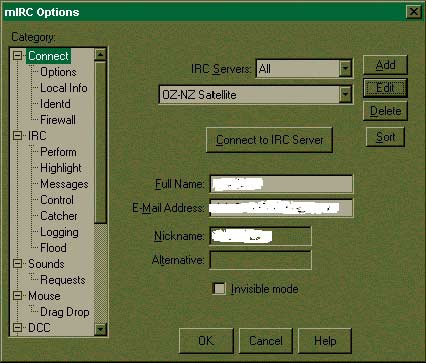
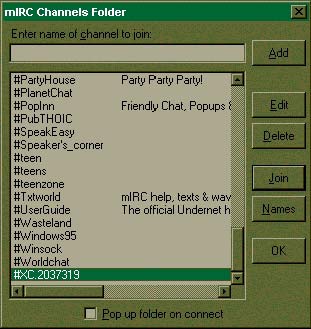
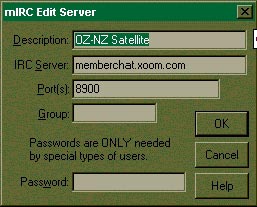
From the Dish
Pas 8 166E A new Boquet of Philipino Channels is here on 3880V Sr 28650 Fec 3/4 PowerVu Encrypted
Optus B1 160E "Optus Business TV"," TVSN" and the six radio channels have left 12689 H
Pas 4 68.5E "B4U Movies" has started on 3743 H, Dig SID 105, PIDs 2560/2520 Don't know if you can get this one unless in the NT with a large dish.
NEWS
PTV launches Channel 3
ISLAMABAD (September 2) : Pakistan Television's new channel 'Channel-3' has begun its transmission on Friday.
A ceremony at the Channel-3 studios in Islamabad was held to mark the formal launch of the transmission in which renowned artistes and media personalities participated.
The daily six and a half hours transmission from 5 pm to 11.30 pm will feature dramas, music, film, sports, kids programmes and live public service programmes.
The aim to launch the new channel is to cater for the entertainment needs of the people.
Regional, national programmes will get the maximum transmission time.
Channel 3 aims to reflect the views of its audience, therefore one of the most important features of the transmission is a 45-minute live public service programme.
The programme will invite questions and comments from its viewers. It will also air public grievances about government organisations and public service agencies.
.The new channel is being launched at a time when the country's media experts and the government have a realisation that information infrastructure in the country has a narrow base.
Pakistan ranks 135th among 175 countries of the world in terms of media accessibility to its people.-APP
The Managing Director PTV, Yousuf Baig Mirza has said the newly launched Channel-3 is to focus on regional and public service programmes.
In an interview with Radio Pakistan on Saturday he said such programmes were direly needed for the sake of national integration and redressal of peoples grievances.
However, PTV-1 could not accommodate them during prime time because of other priorities like news and drama. The new channel will telecast regional and public service programmes during peak viewing time.
The MD PTV said Channel-3 will be introducing four day a week 45-minute programme focusing on performance of government institutions especially public dealing Organisations. Citizens can participate in these programmes through telephone, e-mail, fax or letter highlighting the problems being encountered by them in respect of that organisation.
Baig said PTV would be acquiring services of experts to respond to peoples queries with regard to their individual problems concerning legal, pecuniary, health and educational issues.
To a question he said Channel-3 would not be telecasting Khabarnama or other bulletins carried by PTV-1. However, 2200 hours news bulletin of the yet-to-be launched news and current affairs channel would also be telecast by Channel-3. He said efforts are being made to operationalise news channel during current month.
Replying to another question he said Channel-3's seventy-five percent programmes would be privately produced while 25% would be PTV's own production.
Yousuf Baig Mirza was the chief guest at the concluding ceremony of the three day training workshop for Presenters of FM-101 Radio at Pakistan Broadcasting Academy in Islamabad.
Speaking on the occasion, he lauded recent expansion and innovation in Radio services particularly its broadcasts for motorway travellers. He said Radio's contribution in the present days is exactly in line with its past performance. He specially appreciated the launching of FM-101 and said our broadcasters can learn a lot from such broadcasting networks of the developed countries.
Yousuf Baig Mirza congratulated those who successfully completed the workshop and expressed the confidence that their talent would be utilised for the greater benefit of Radio and its listeners.
The Chief Guest gave certificates to the sixteen presenters of FM-101 who participated in the training workshop from Islamabad, Lahore and Karachi.
The Director General, Pakistan Broadcasting Corporation and other senior officers were also present in the ceremony.-
3/9/00
Lots happening on Panamsat 2, Panamsat 8 and Asiasat 3 it might be worth reloading these 3 satellites. Tvbs ? on Asiasat 3??? reports needed please. Olympics Feeds page is almost ready to go up.
From my emails
Hi,
I would like to inform you that there is a test signal on Asiasat 3S,
parameters are; analog 3640 MHz, H , Audio 6.55/ 7.26. Identifying
themselves as ASIA PLUS.
Regards,
D Krishna
Bill Richards supplys more of his excellent screenshots
From the Dish
Pas 2 3902 Vert Sr 27686 Fec 2/3
Vpid 1160 Apid 1120 PCR 1160 TCN 9 SYDNEY test card
Vpid 1260 Apid 1220 PCR 1260 TCN 9 SYDNEY test card
Vpid 1360 Apid 1320 PCR 1360 TCN 9 SYDNEY test card
Vpid 1460 Apid 1420 PCR 1460 TCN 9 SYDNEY test card
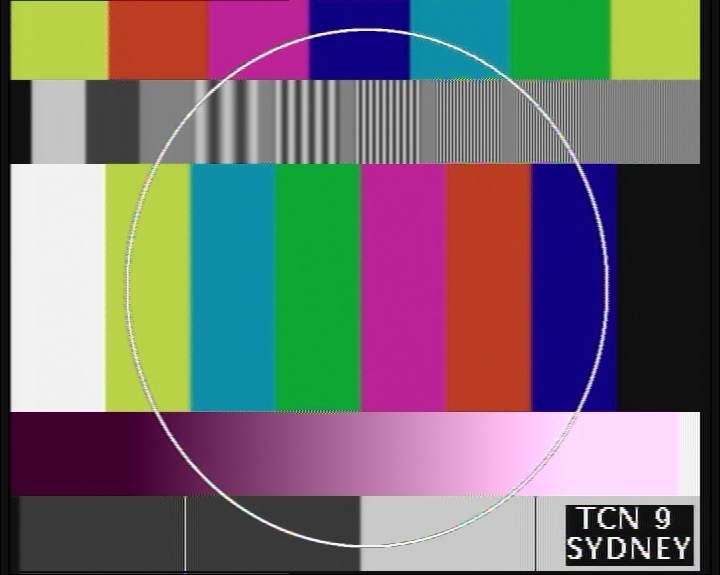
Pas 2 3804 Vert 6619 2/3
Vpid 2160 Apid 2120 PCR 2160 NBC basketball feed

Regards
Bill
Asiasat 3 105.5E "Dong Feng Asia Plus" 3640H analog Audio 6.55 / 7.26
Asiasat 3 105.5E "TvBS?" 3650H? A feed perhaps?


Asiasat 2 100.5E "Ctv 3-4-9" 12460H Sr 19850 Fec 3/4
2/9/00
Not much of an update not a lot of news around usually on the weekend, If your a Large Dish installer or know of anyone in the Nelson, New Zealand region into satellite tv please email the info!! I don't have any local contacts who can help me get my big dish up and running!
From my Emails
Bill R. Supplies the following on Pas2
3860 vert sr 27686 Fec 2/3
Vpid 1160 Apid 1120 PCR 1160 PANAMSAT SYDNEY test card
Vpid 1260 Apid 1220 PCR 1260 PANAMSAT SYDNEY test card
Vpid 1360 Apid 1320 PCR 1360 PANAMSAT SYDNEY test card
Vpid 1460 Apid 1420 PCR 1460 PANAMSAT SYDNEY test card
4083 vert sr 12208 Fec 2/3
Vpid 1160 Apid 1120 PCR 1160 PANAMSAT SYDNEY test card
4110 vert sr 27686 Fec 2/3
Vpid 1160 Apid 1120 PCR 1160 PANAMSAT SYDNEY test card
Vpid 1260 Apid 1220 PCR 1260 PANAMSAT SYDNEY test card
Vpid 1360 Apid 1360 PCR 1360 PANAMSAT SYDNEY test card
Vpid 1460 Apid 1420 PCR 1460 PANAMSAT SYDNEY test card
Regards
Bill
1/9/00
From my Email
J Murton supplies this interesting URL
http://www.attisat.gr/FL500_1.html
From The Dish
More Olympic Feeds being tested on Pas2/8
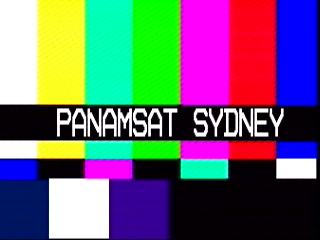
169°E PAS-2 4083V Sr 12200 Fec 2/3
169°E PAS-2 4110V Sr 27700 Fec 2/3
166°E PAS-8 4180H Sr 26000 Fec 7/8
Some small screenshots from The FTA Korean Channels on St1 at 88E
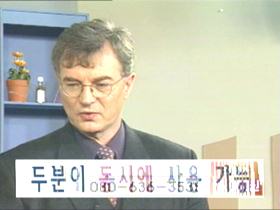



Possible Feeds this weekend
Saturday 2nd September
2 pm Syd AFL Grand Final
Sunday 3rd September
2 a.m Syd US Open Tennis (I701 probably)
8.55pm Syd World Superbike Championships from Holland (I701 Usually)
10.55pm Syd World 500cc From Portugal